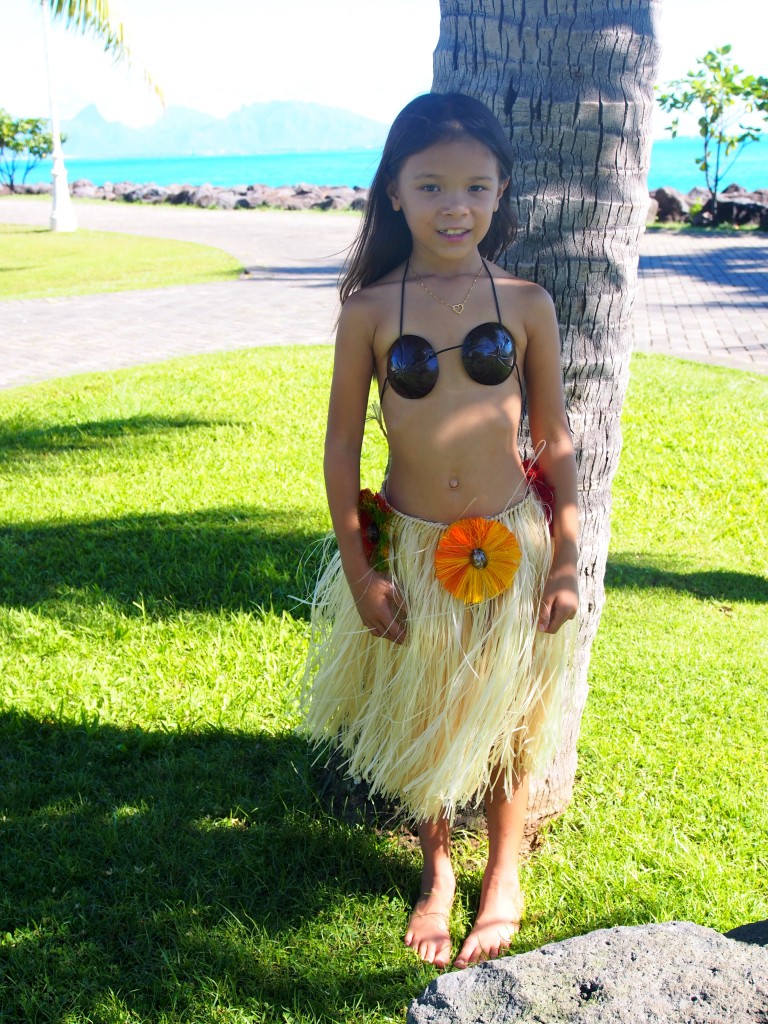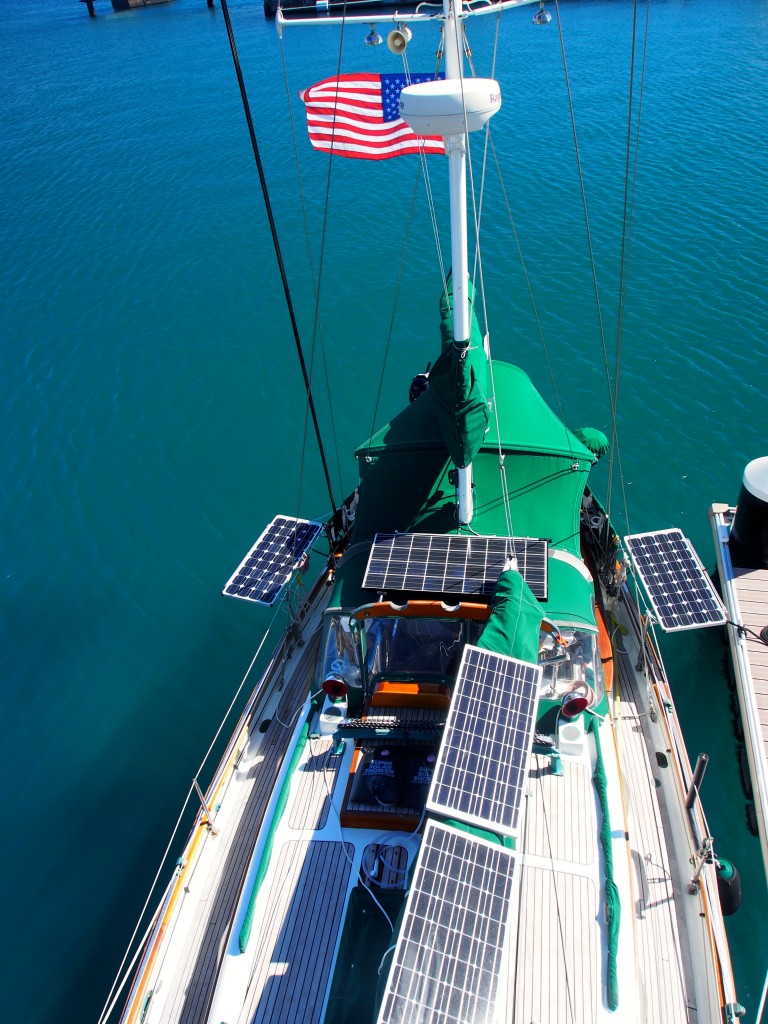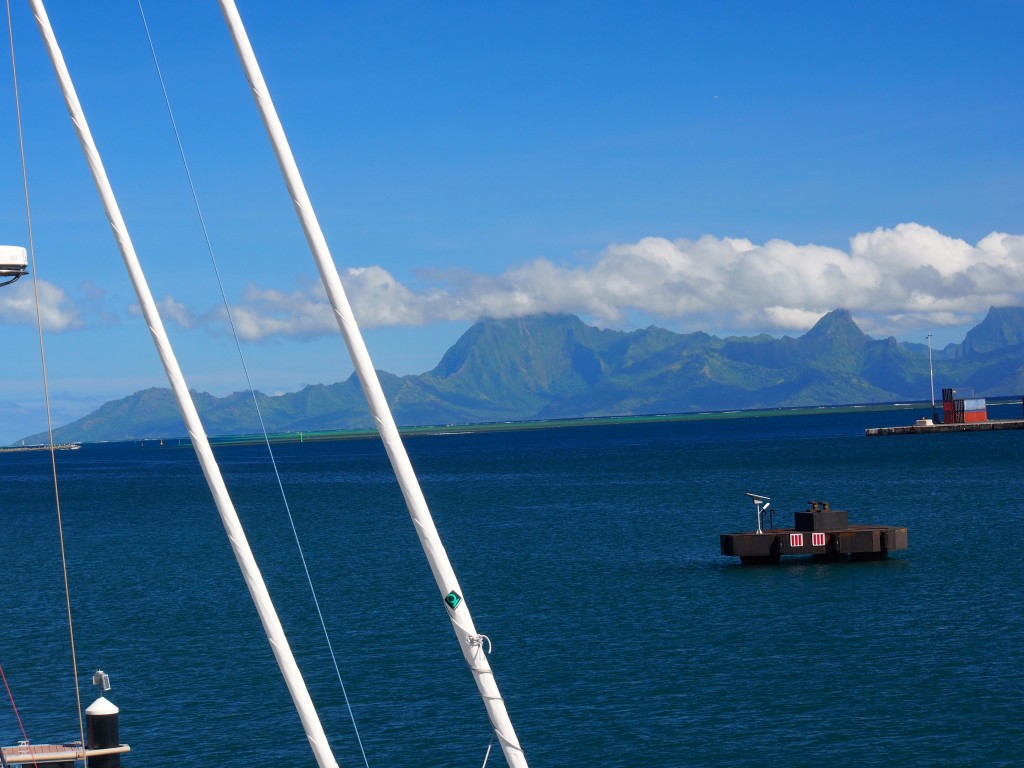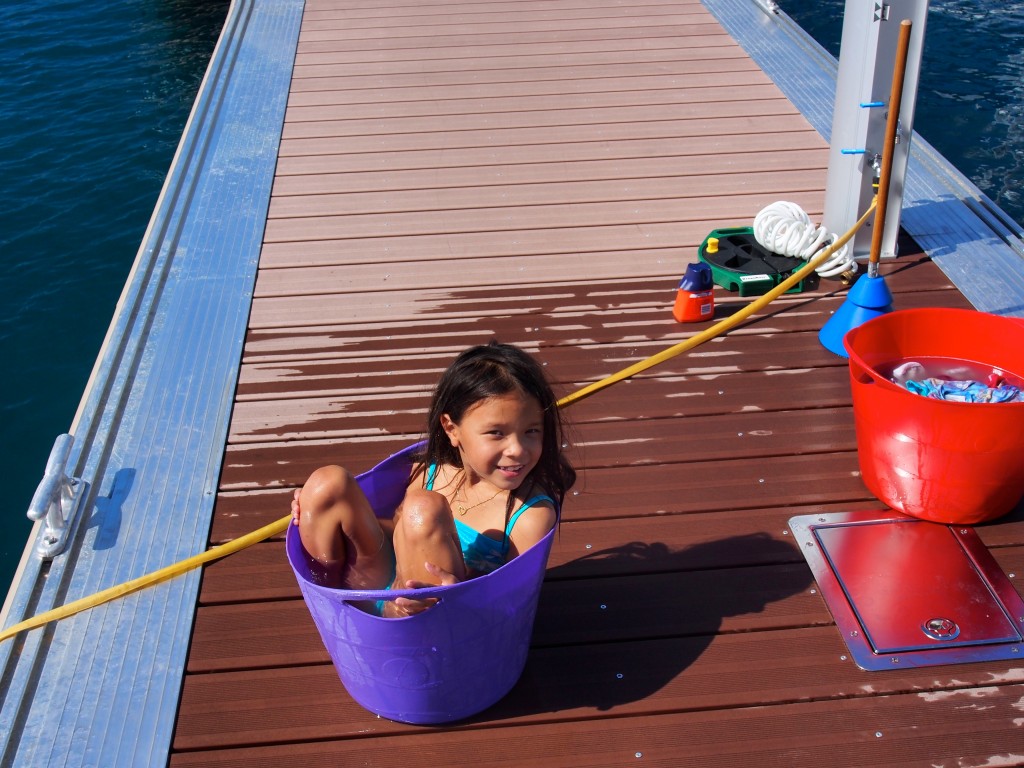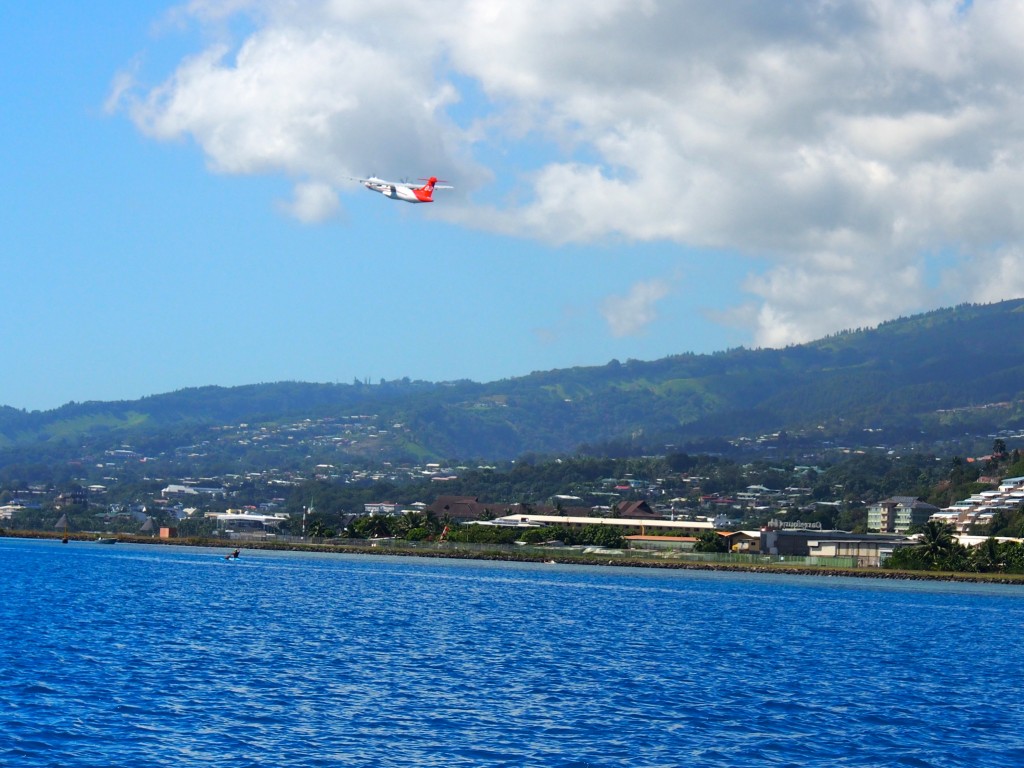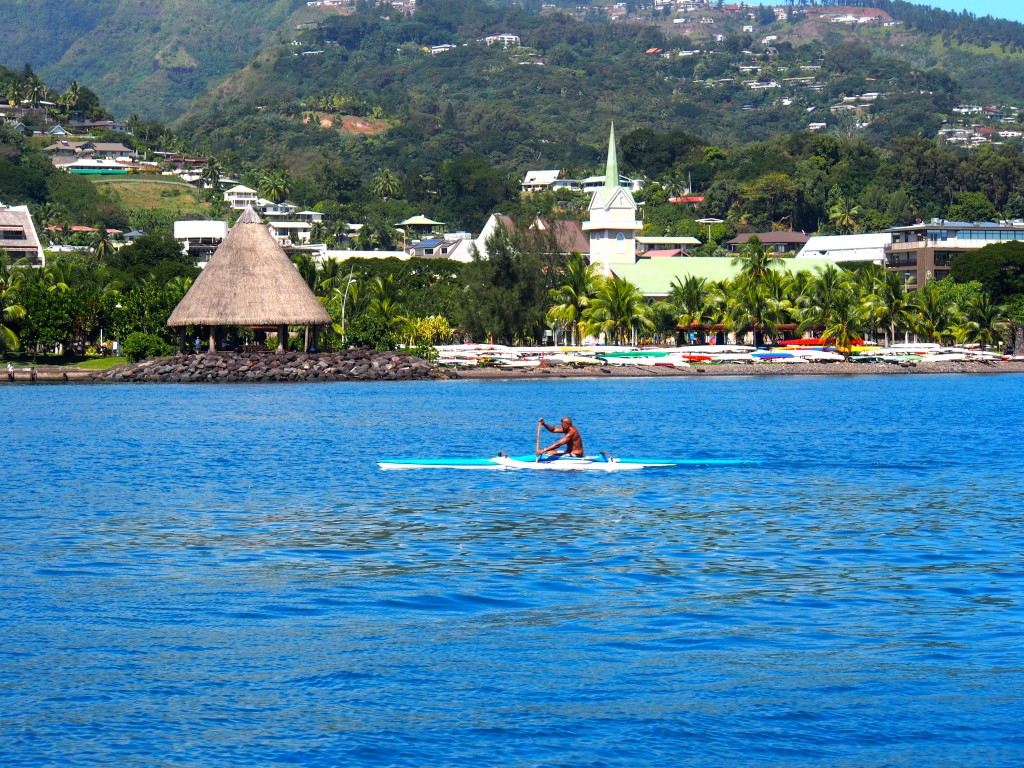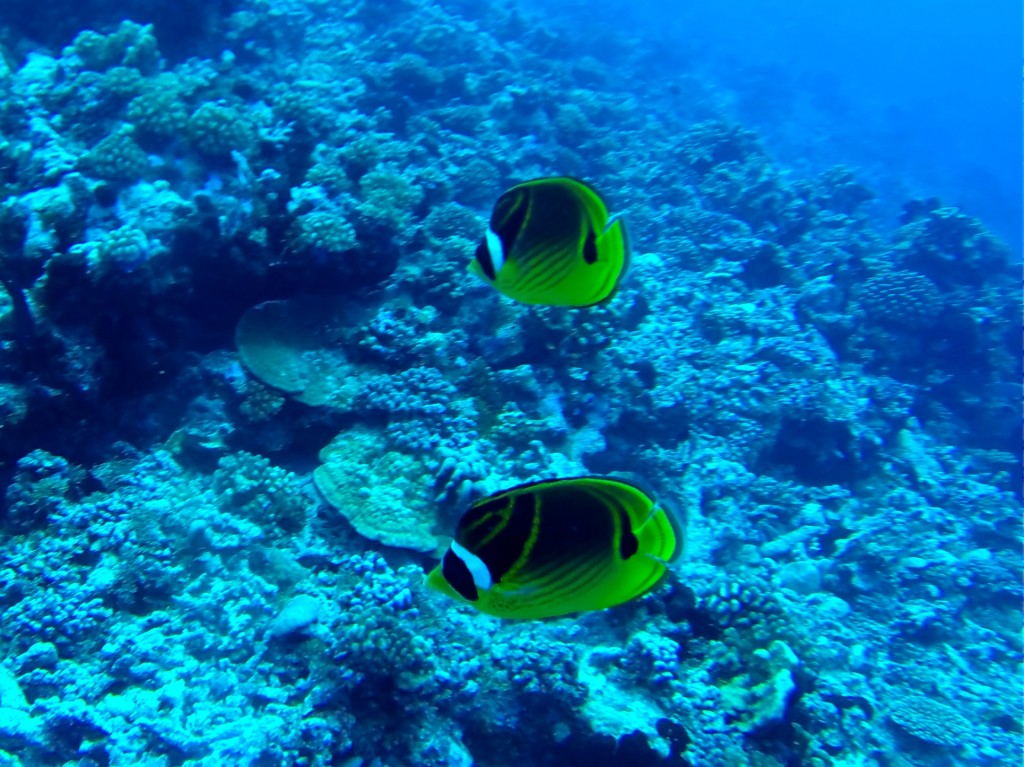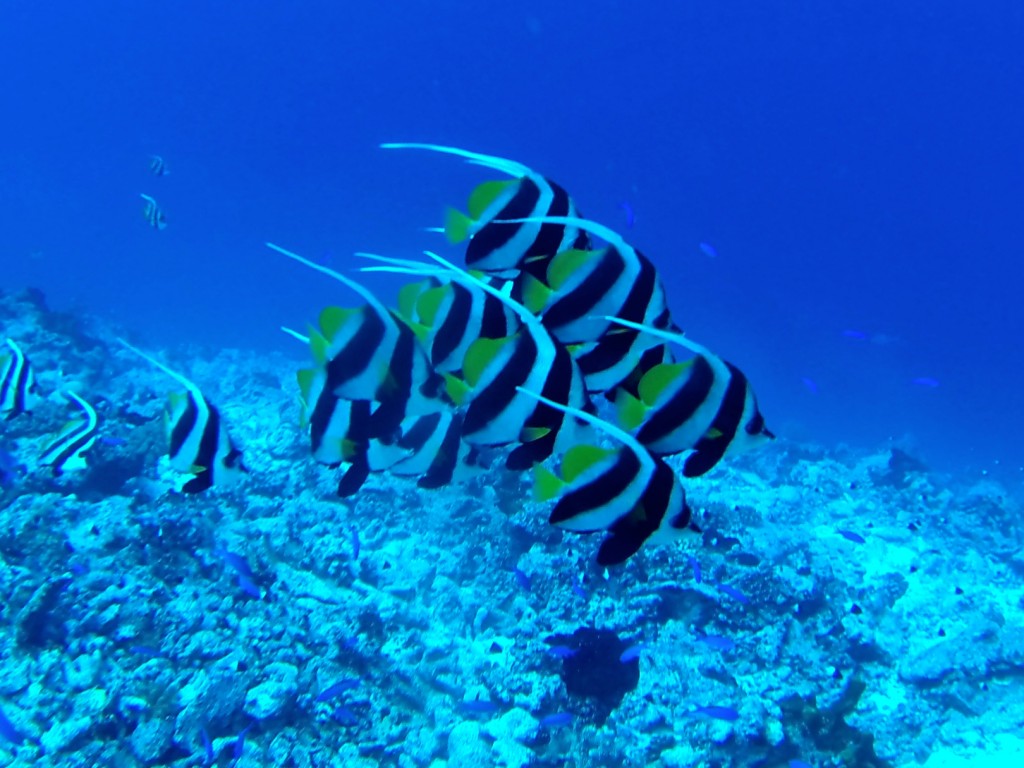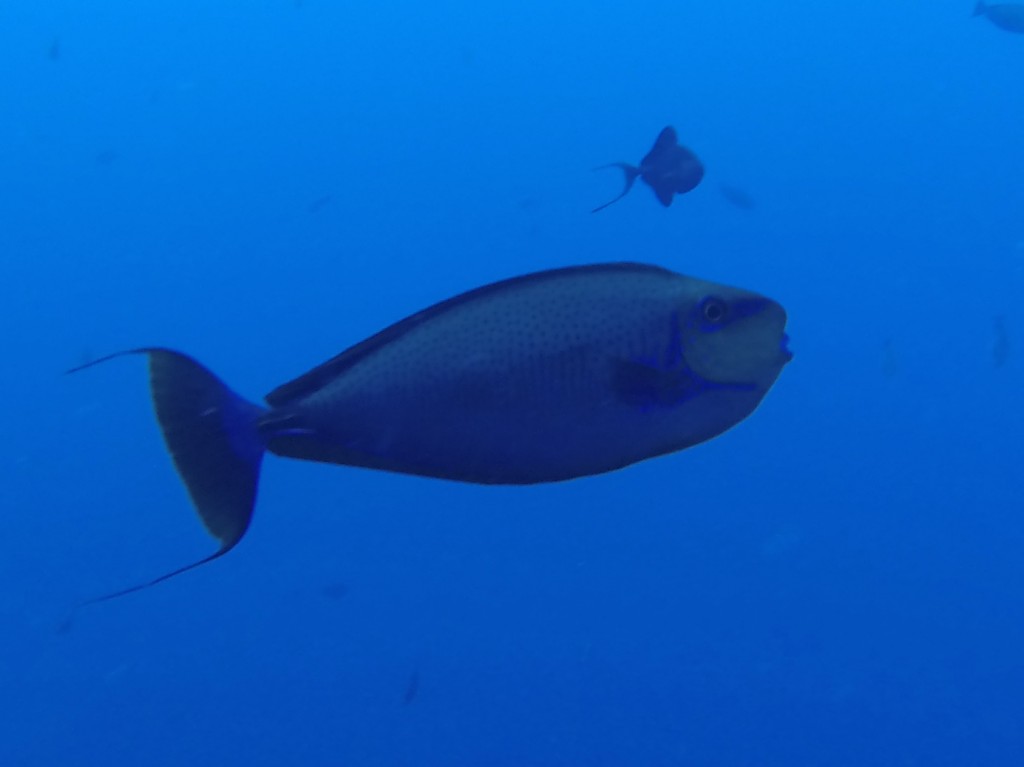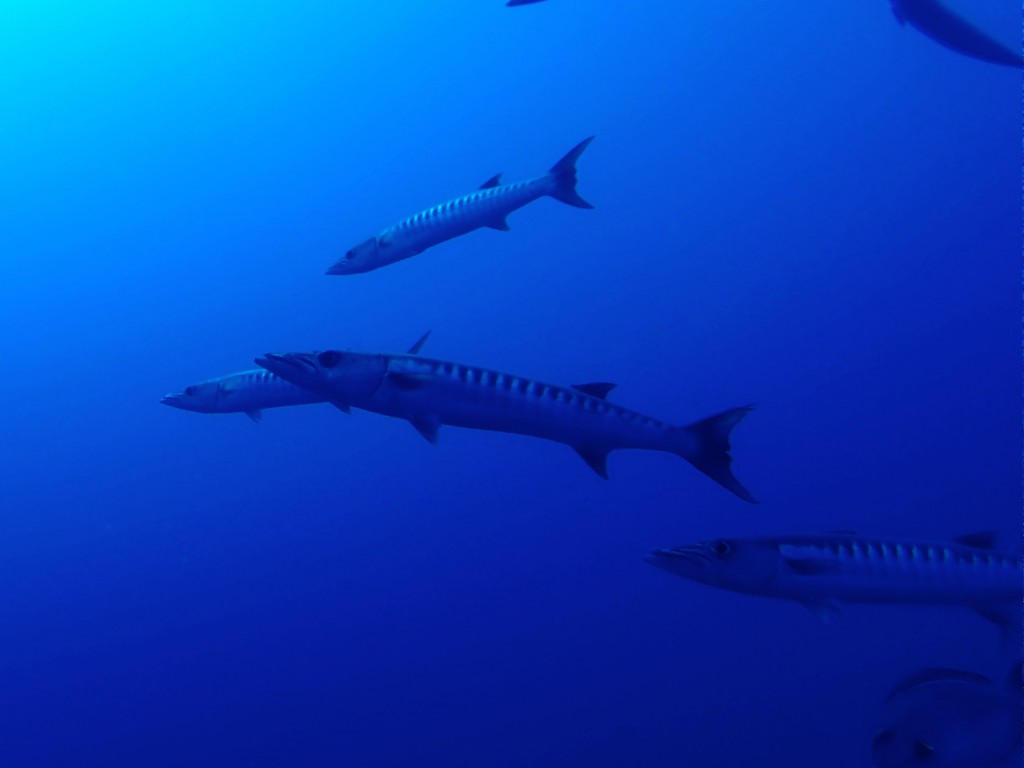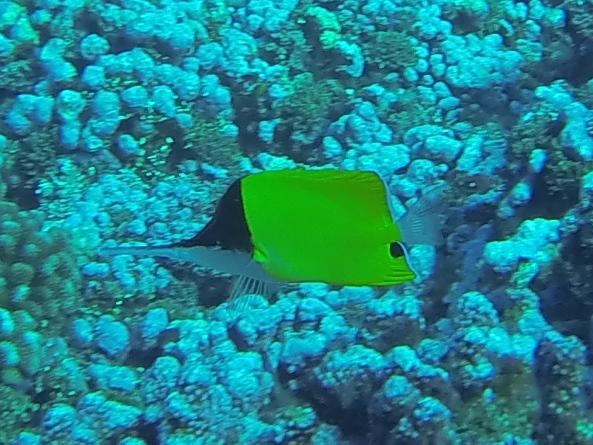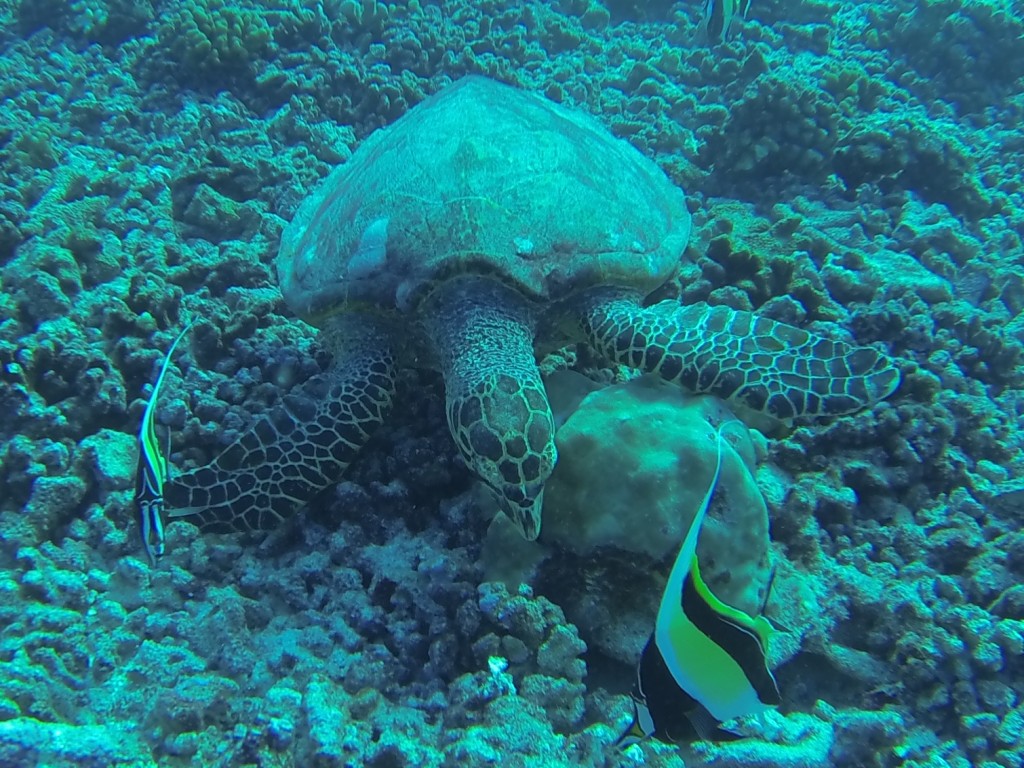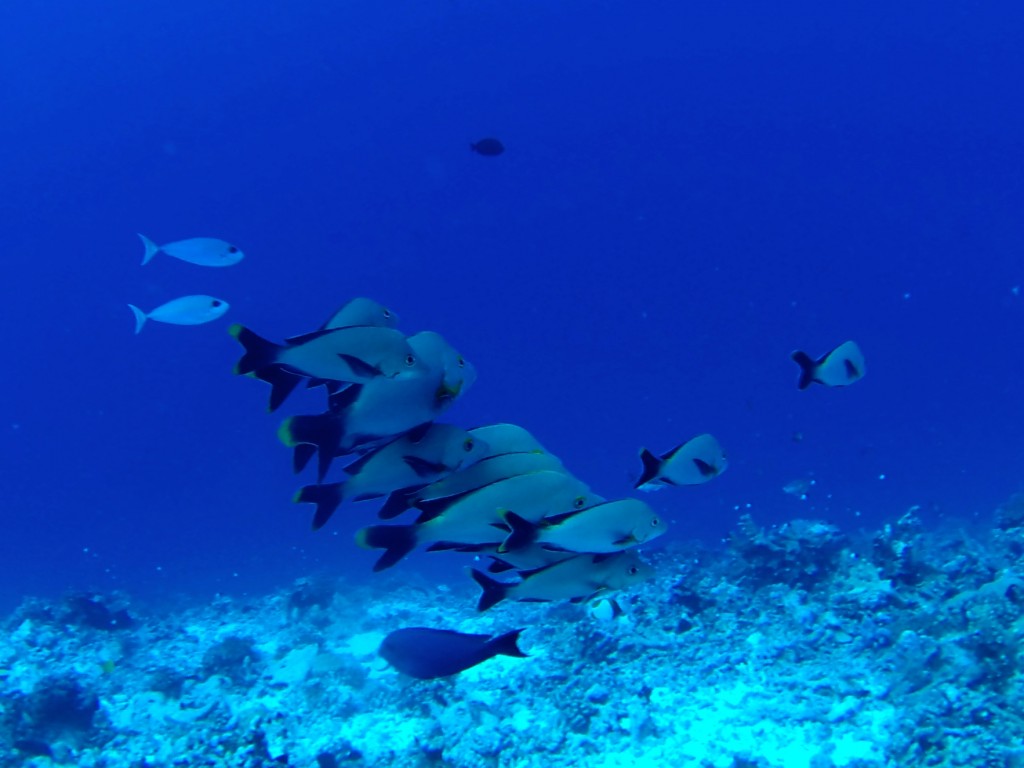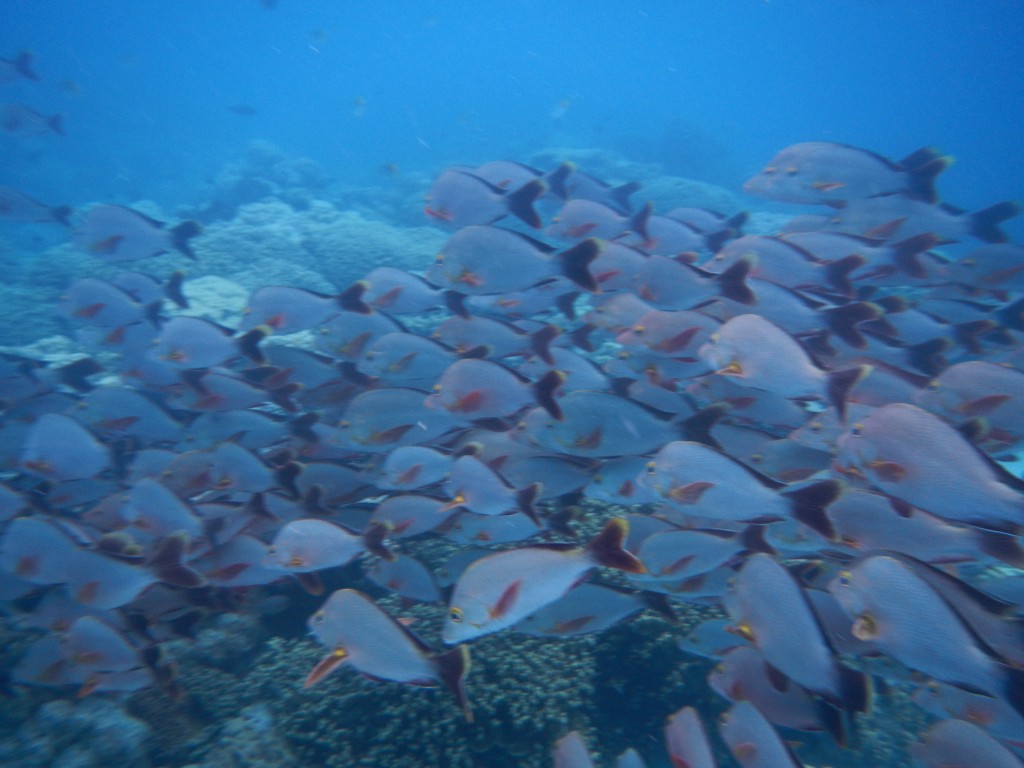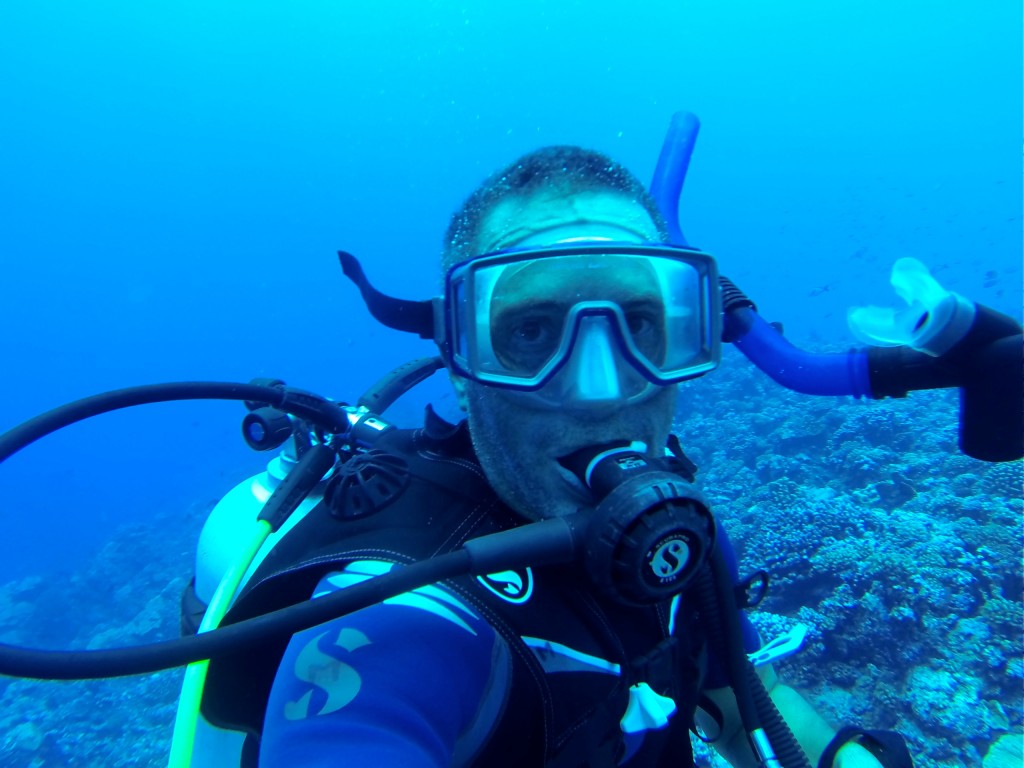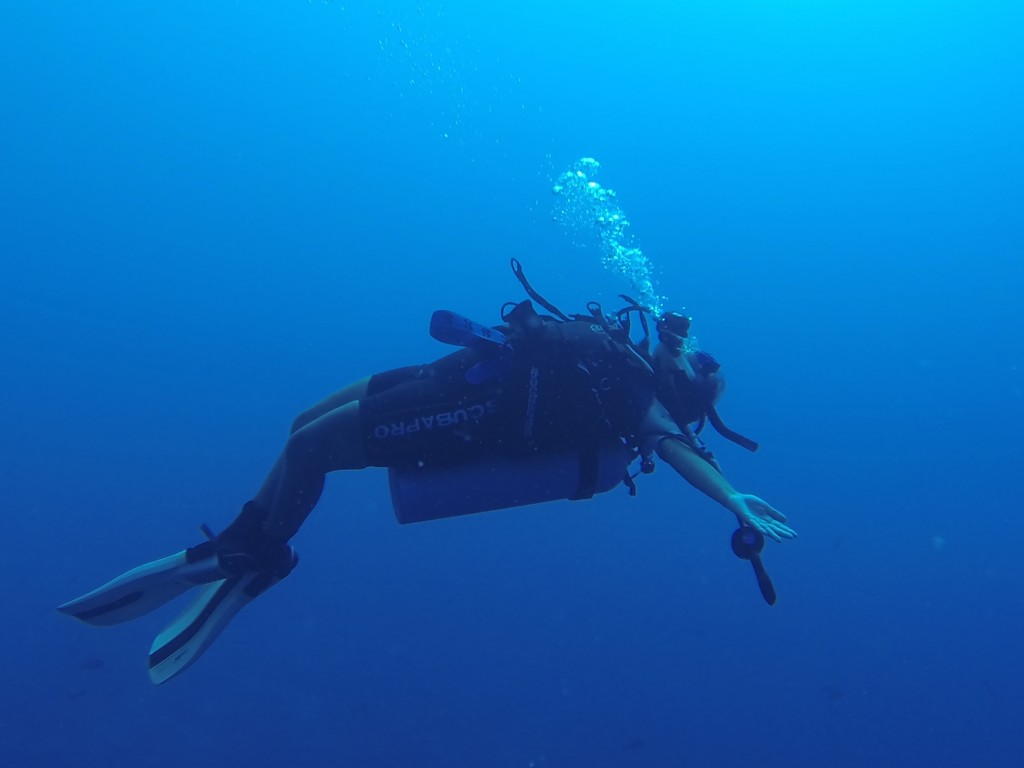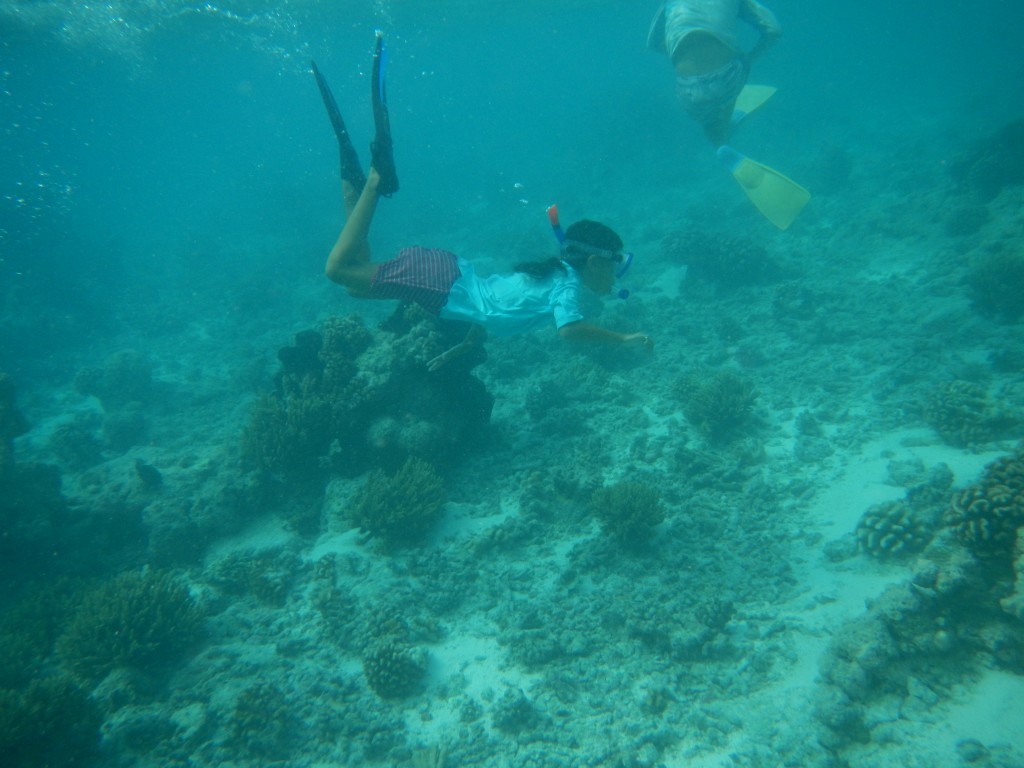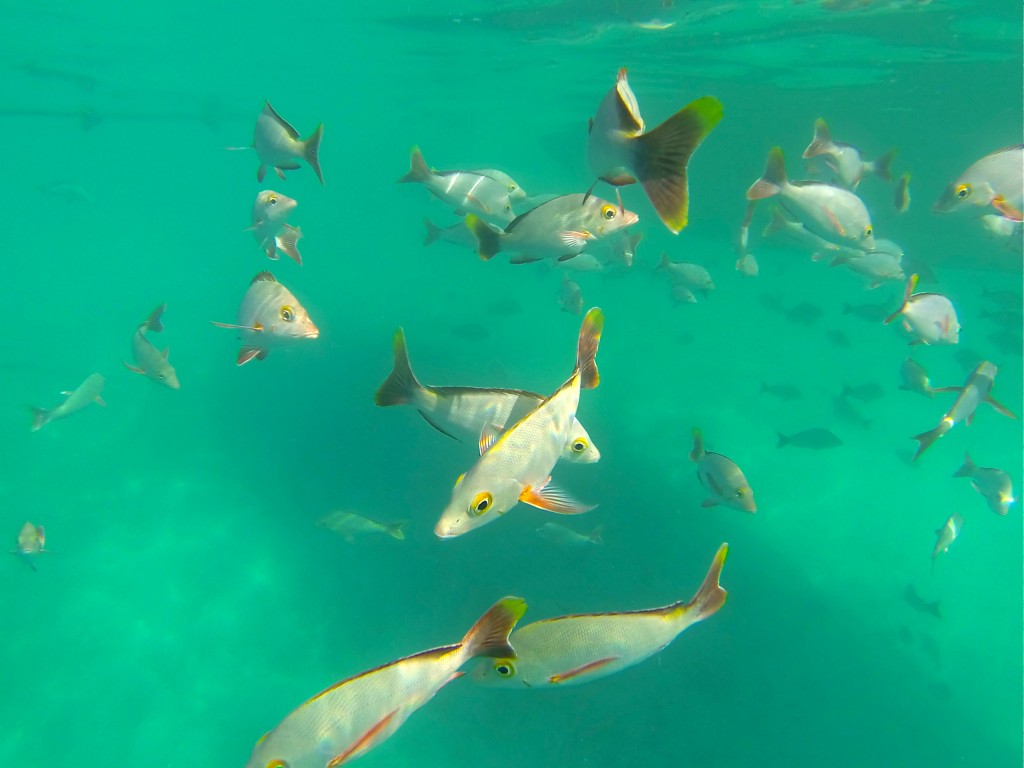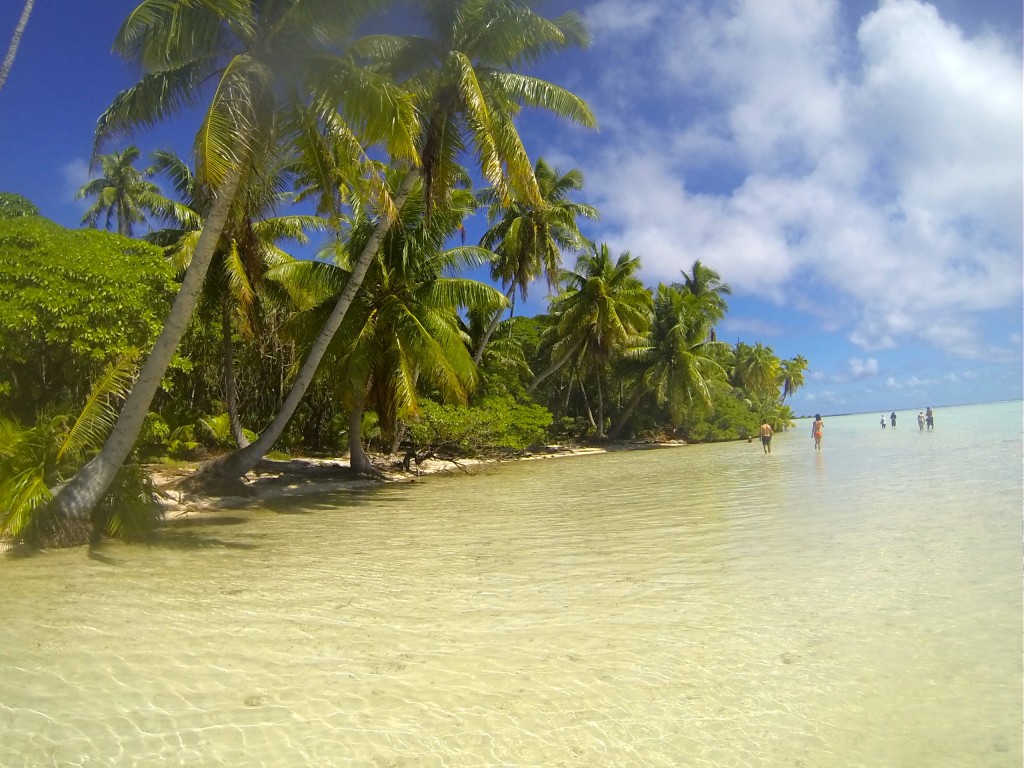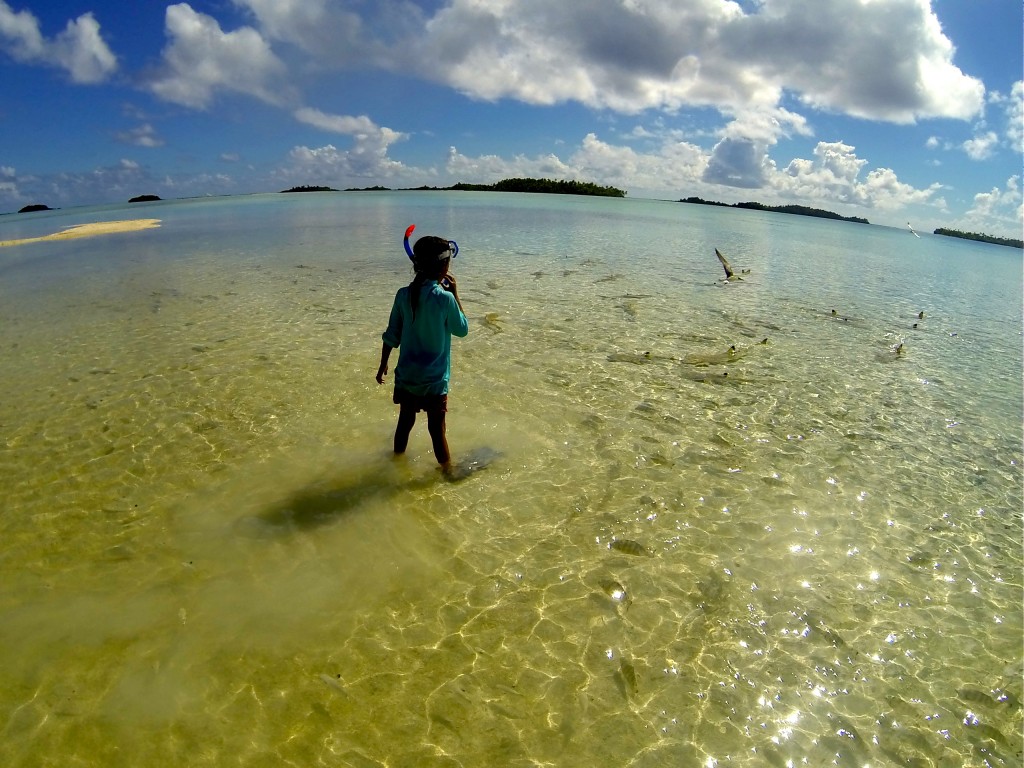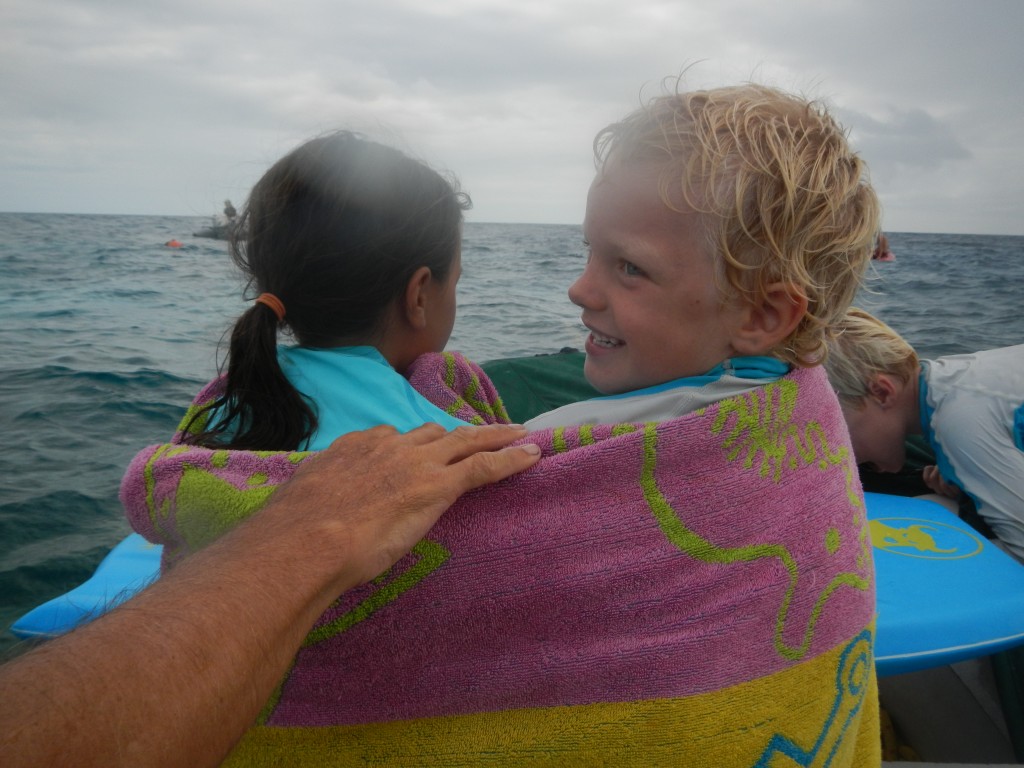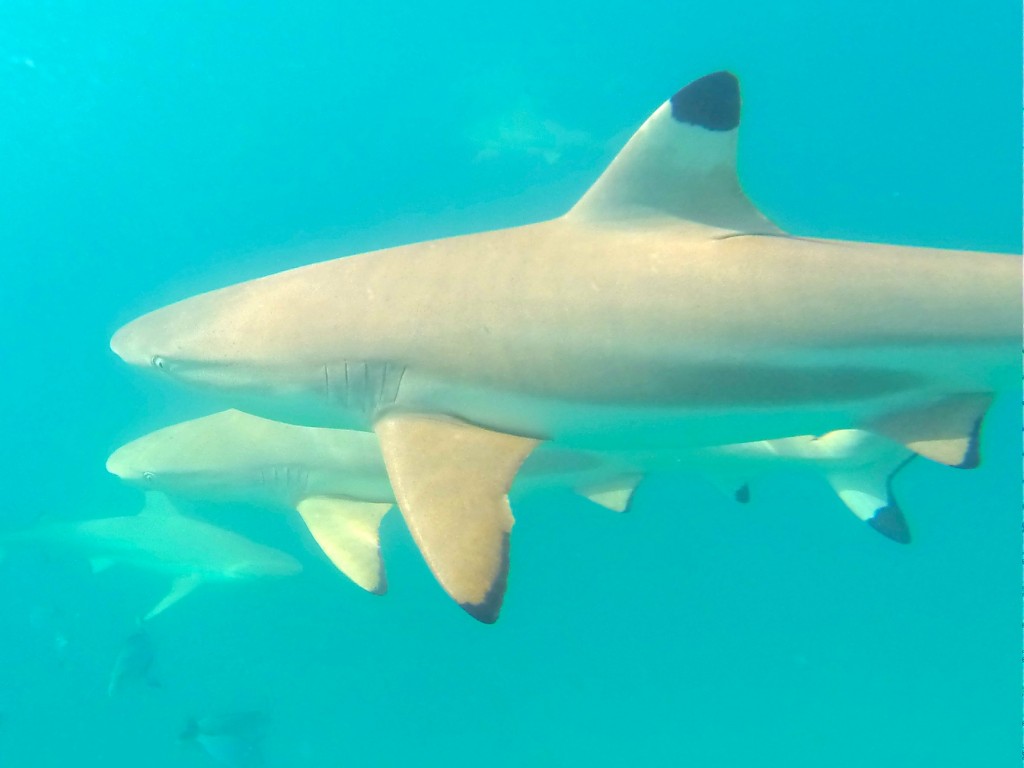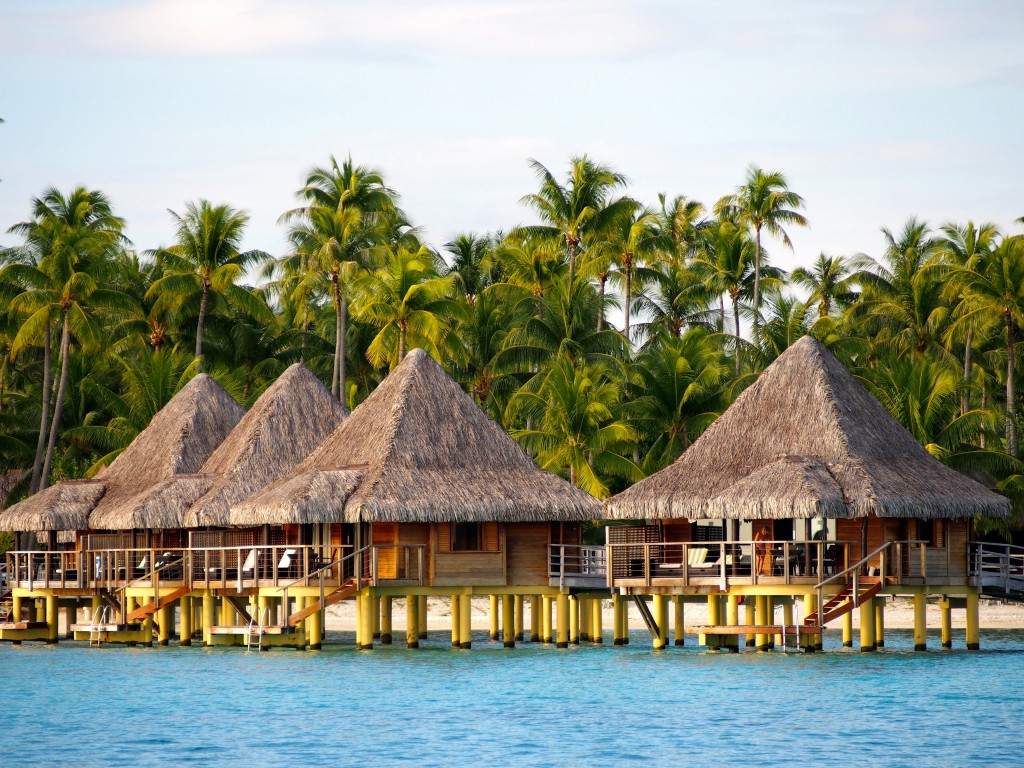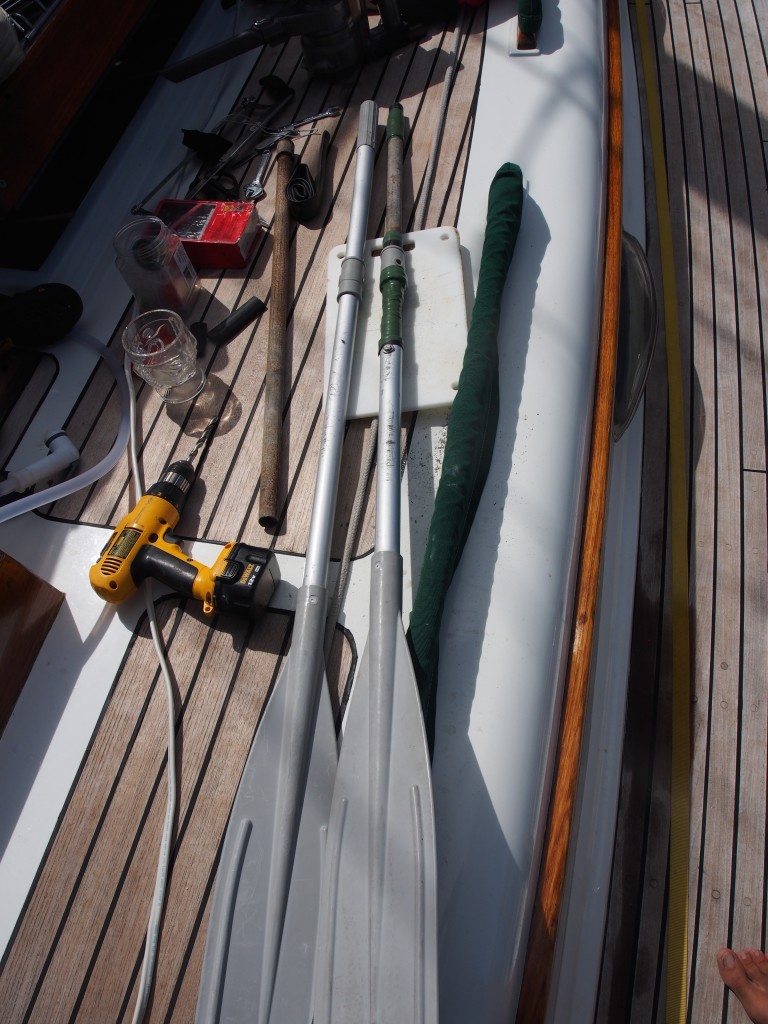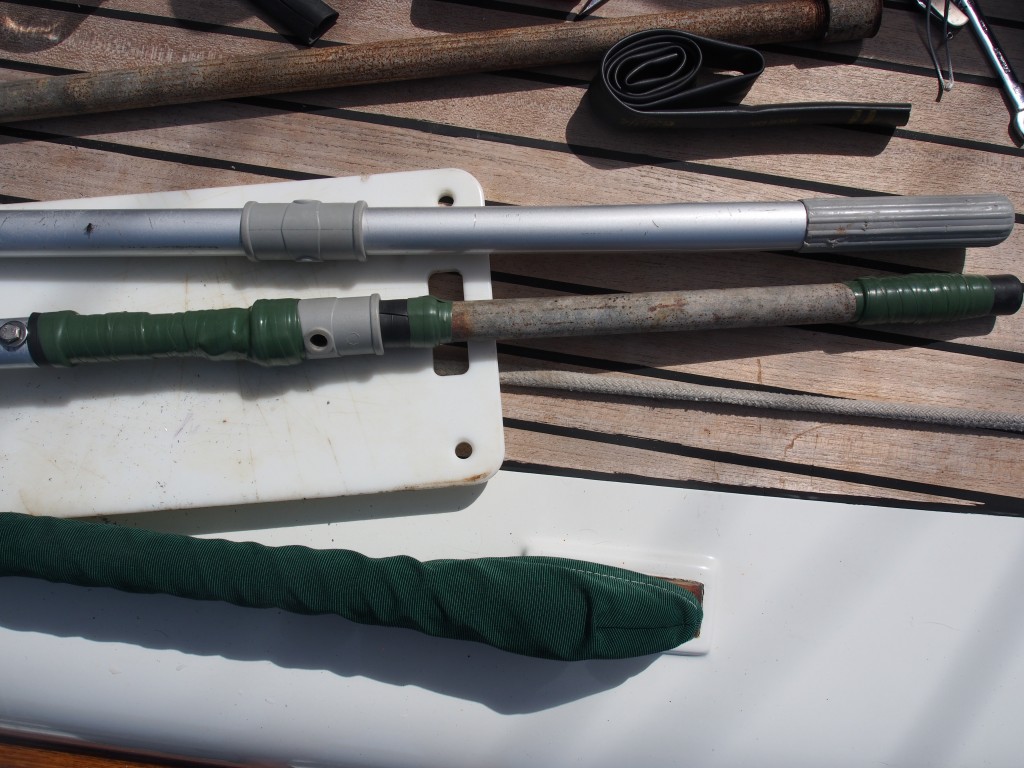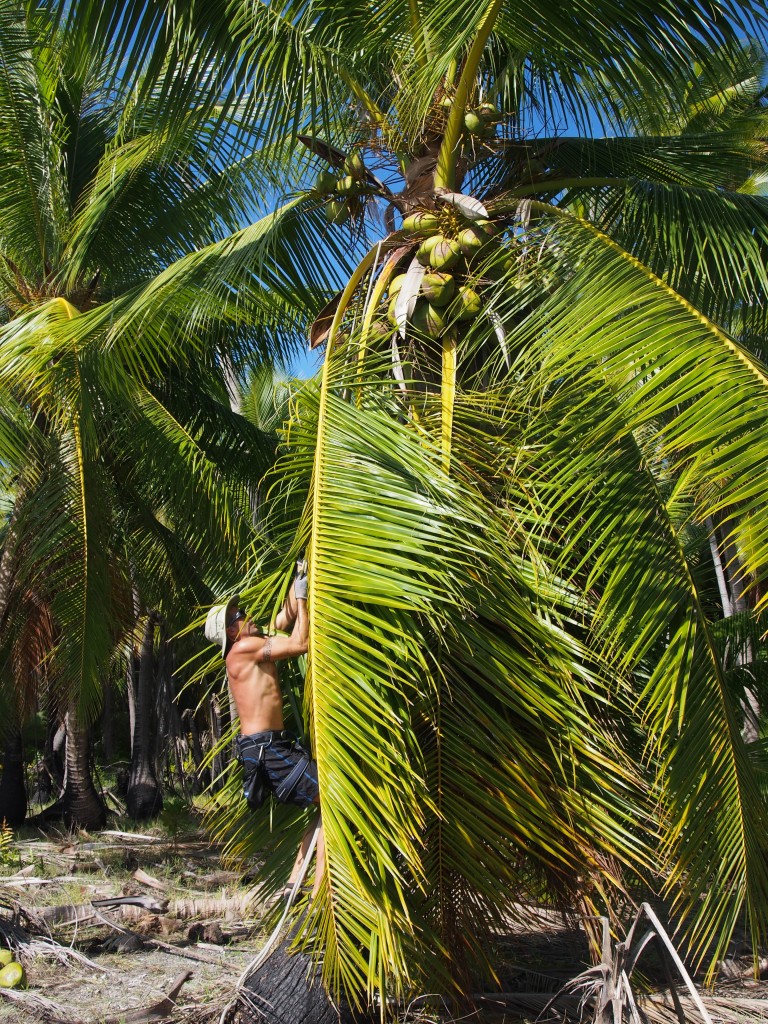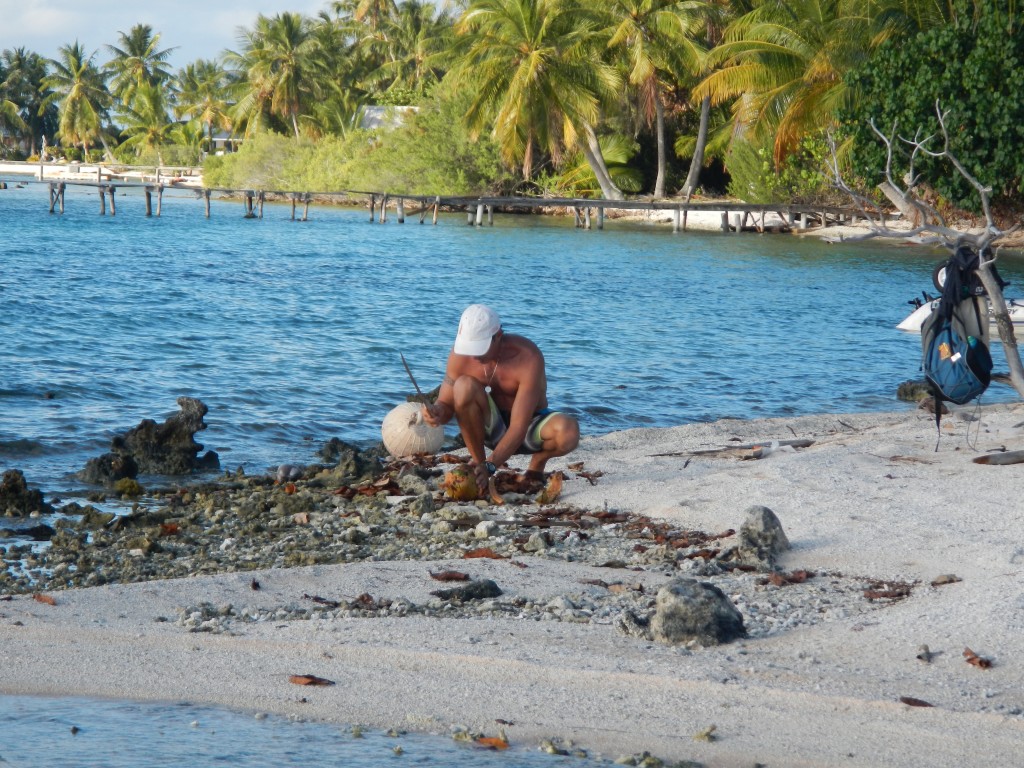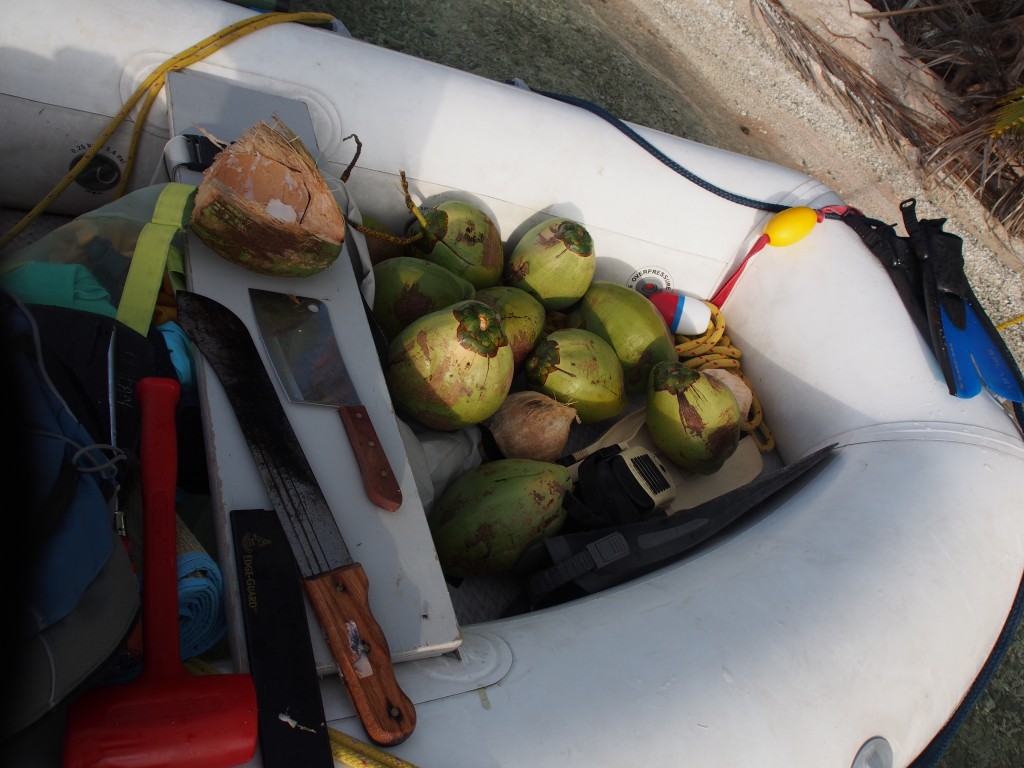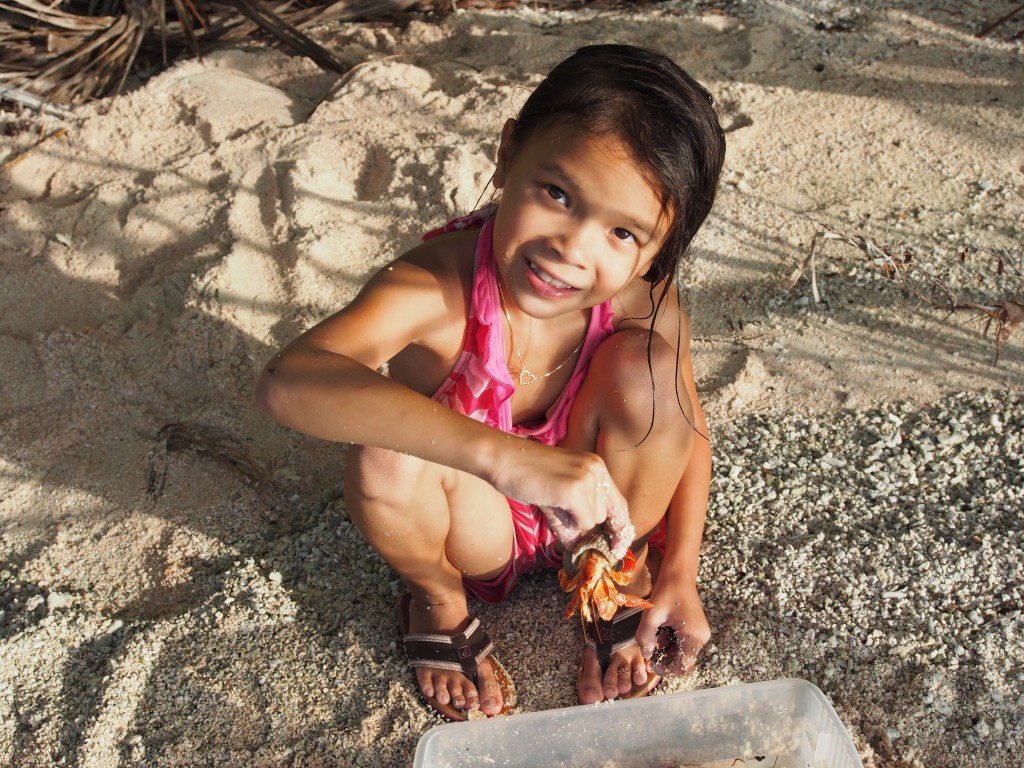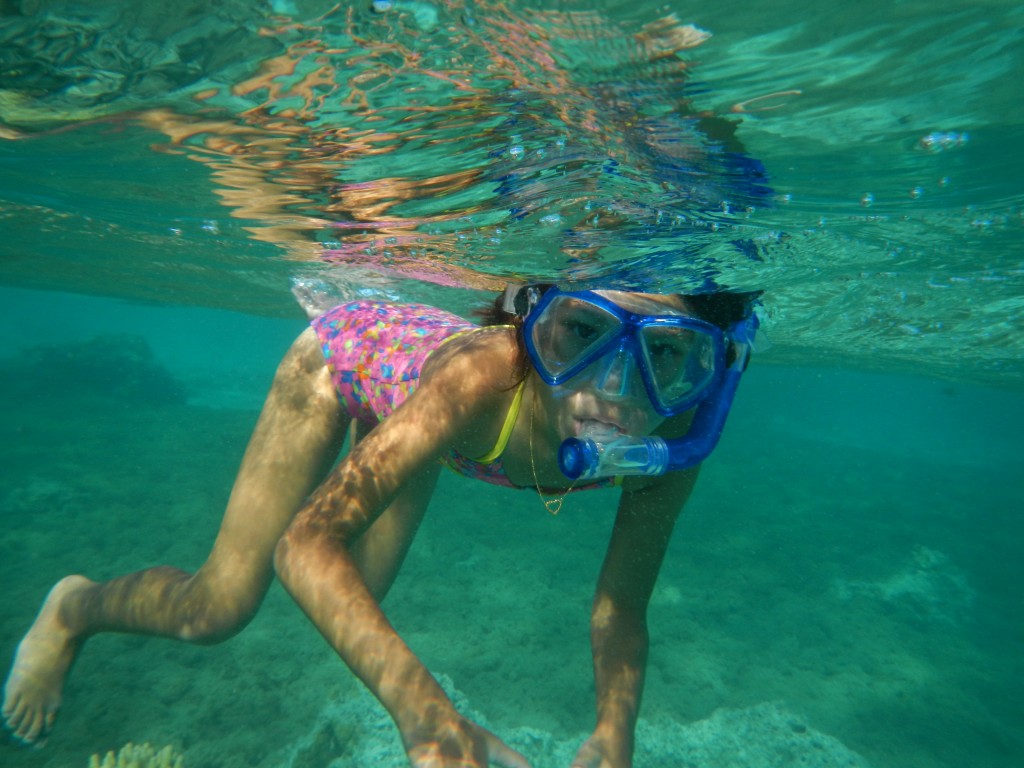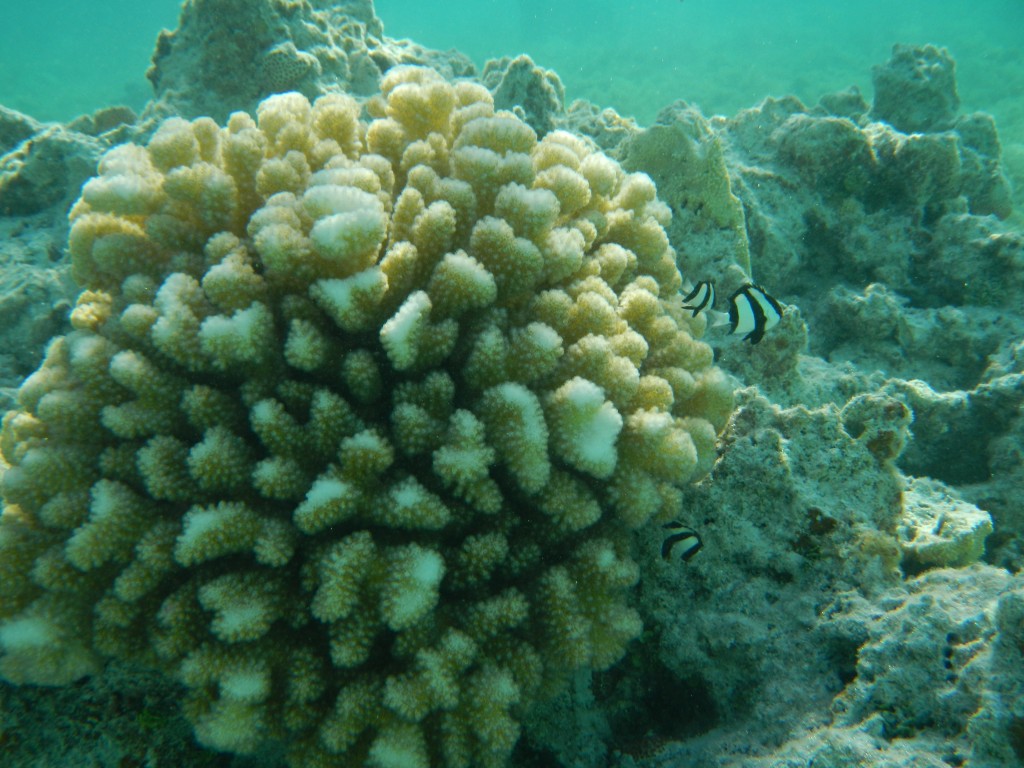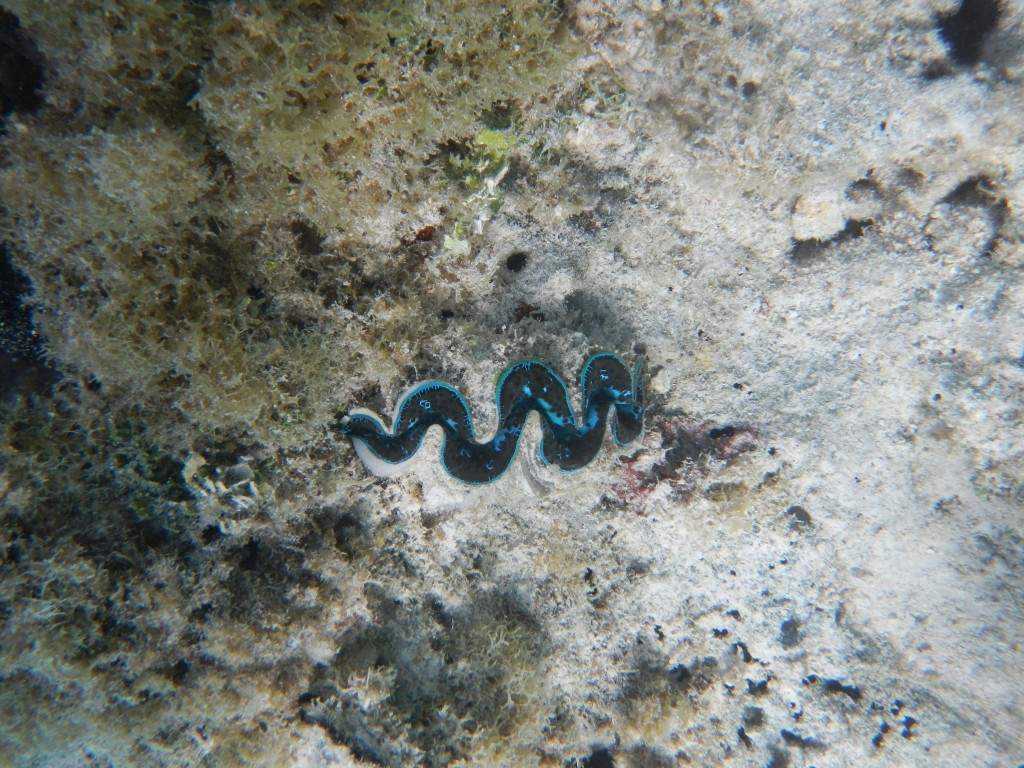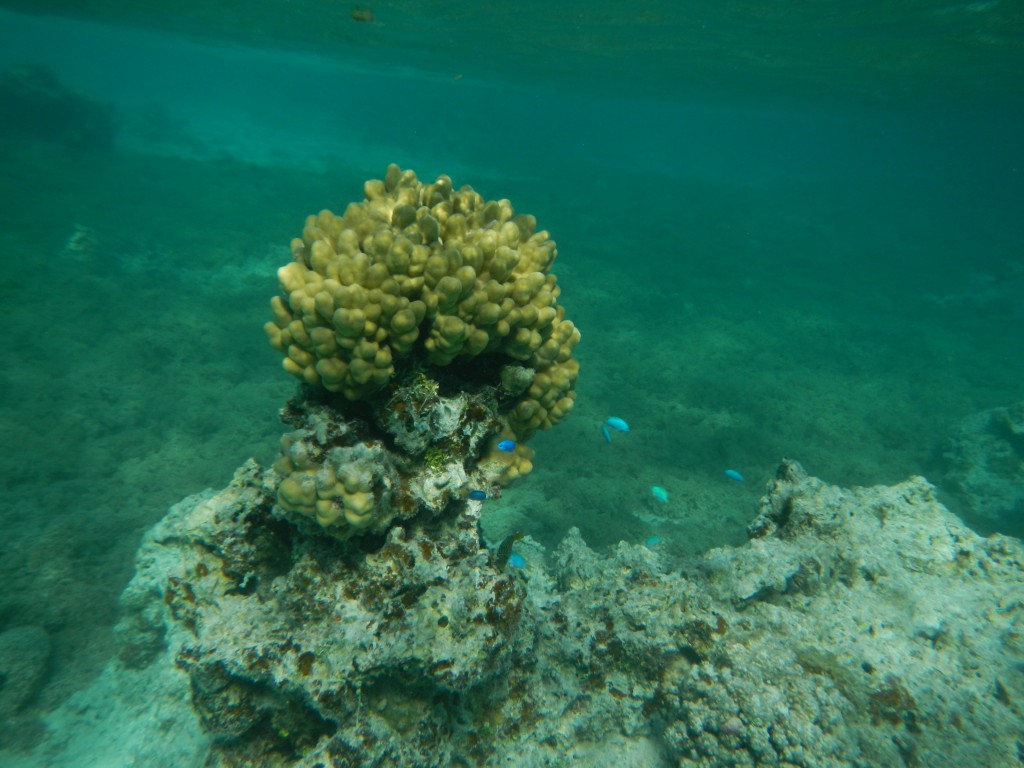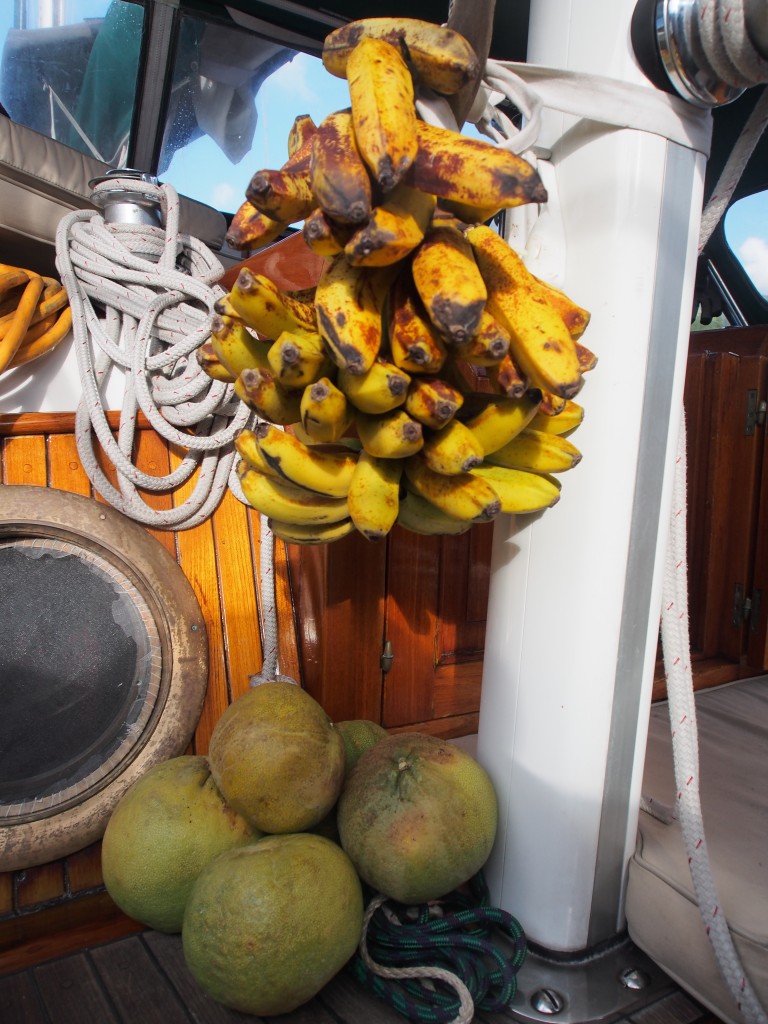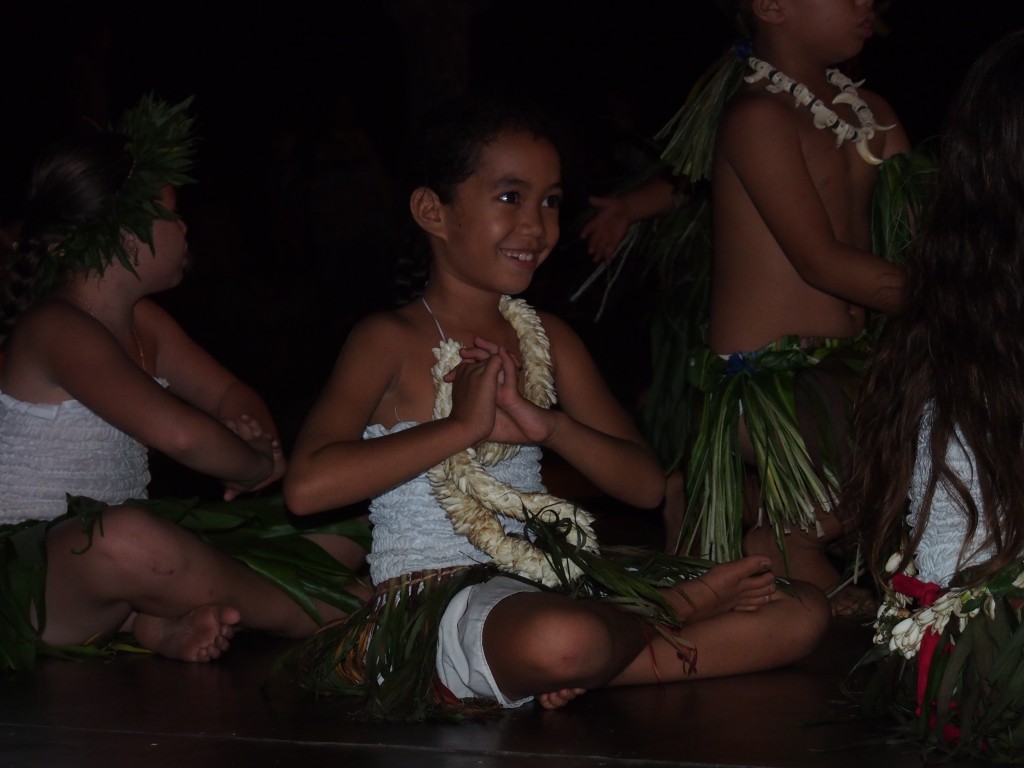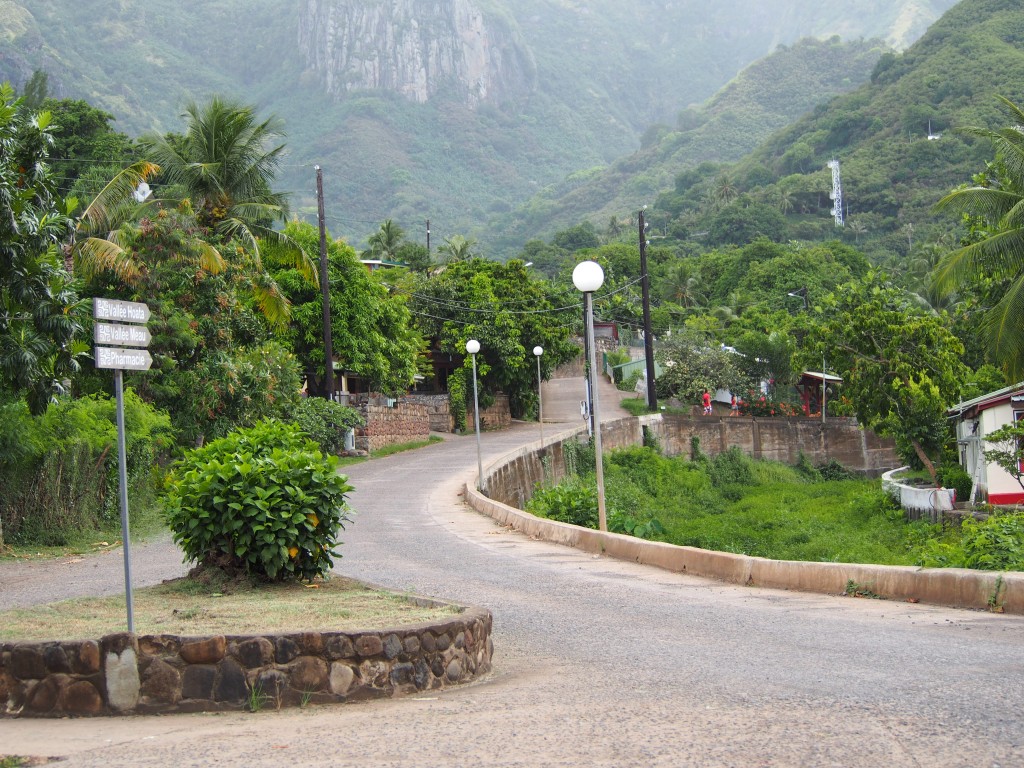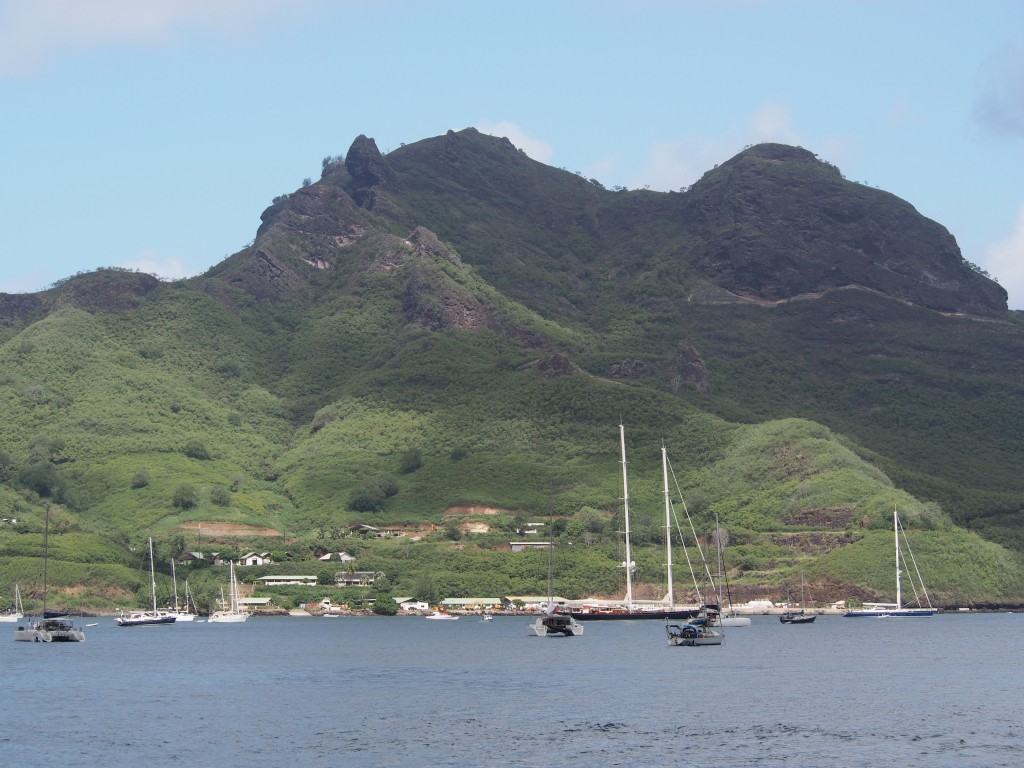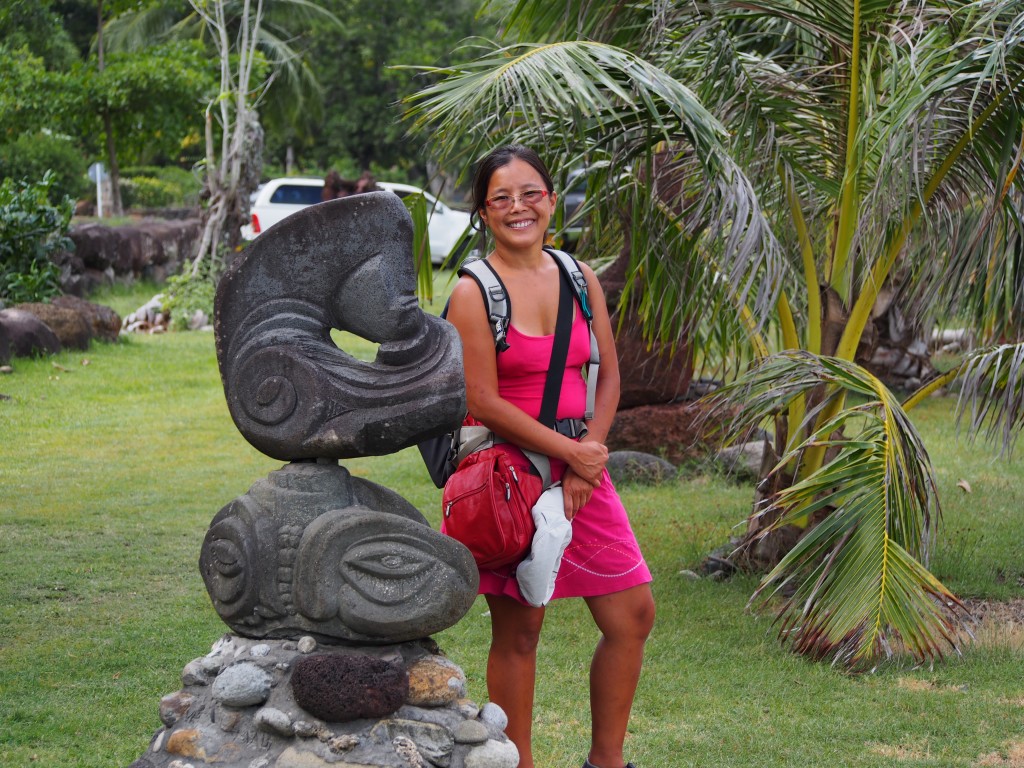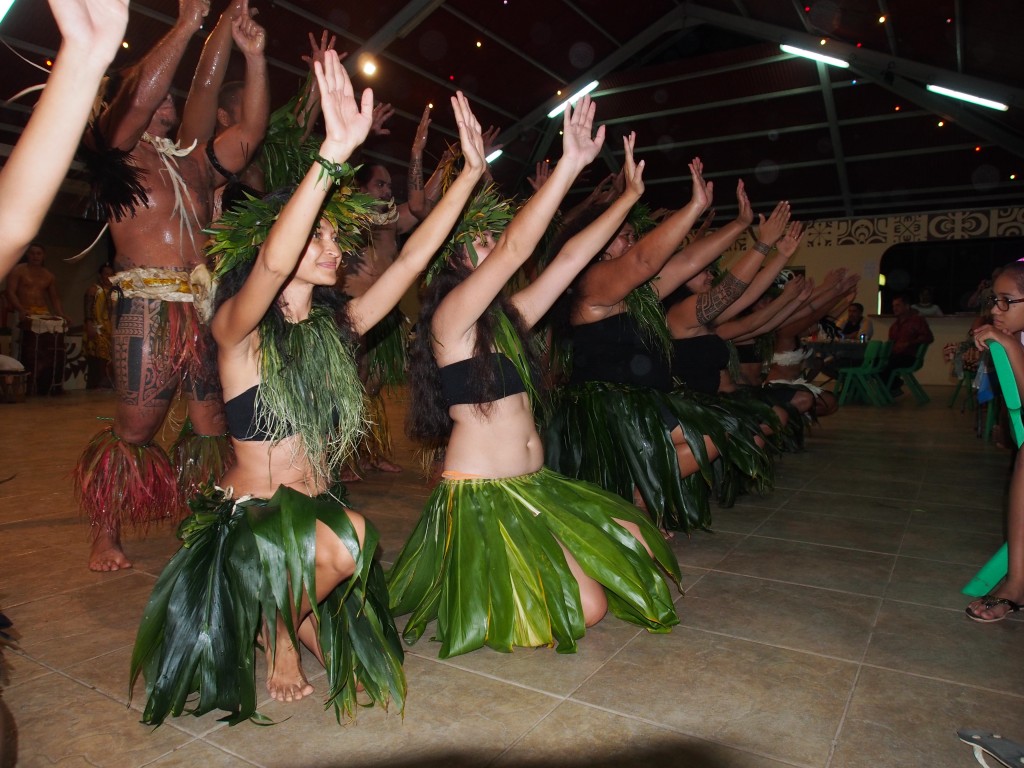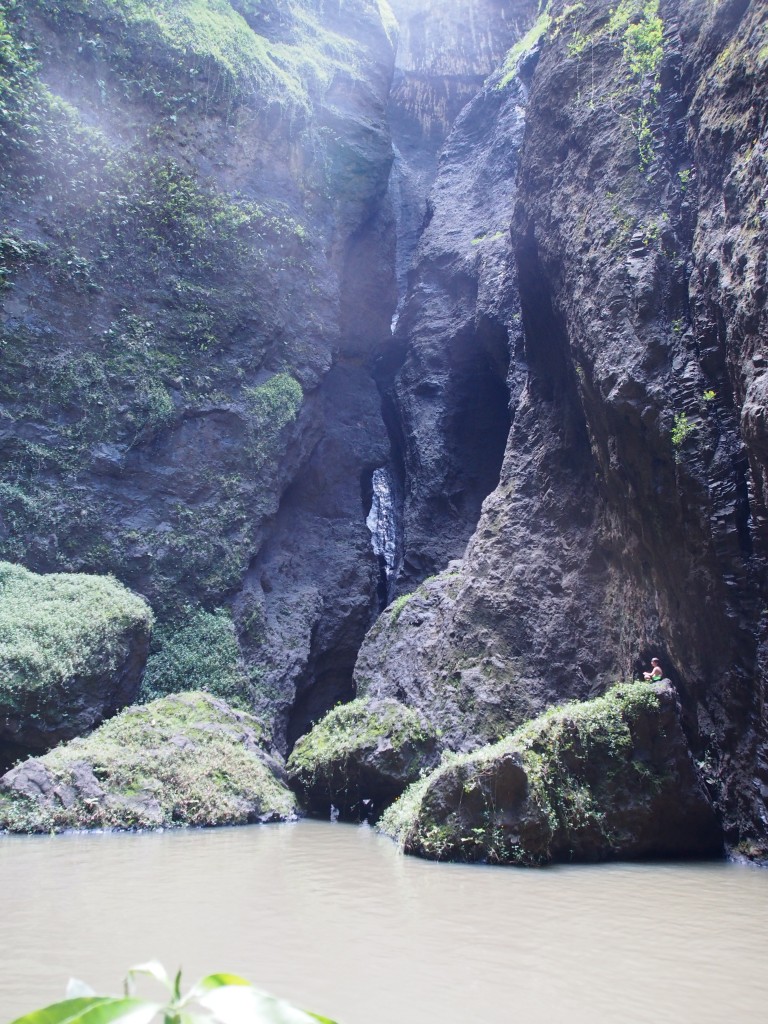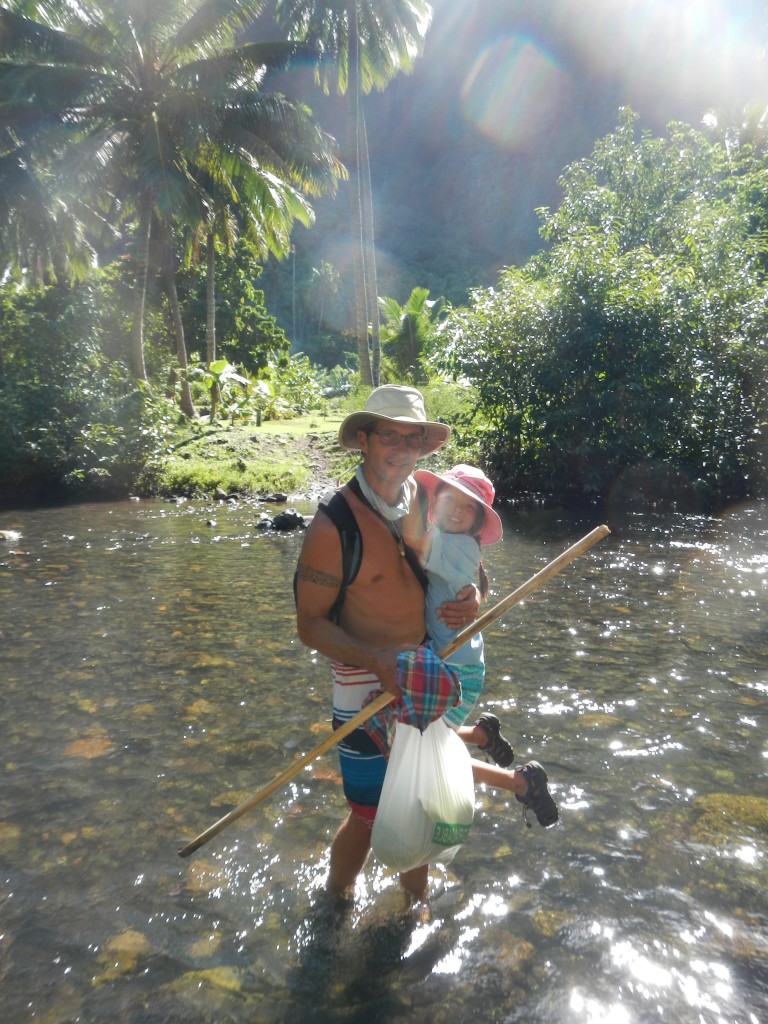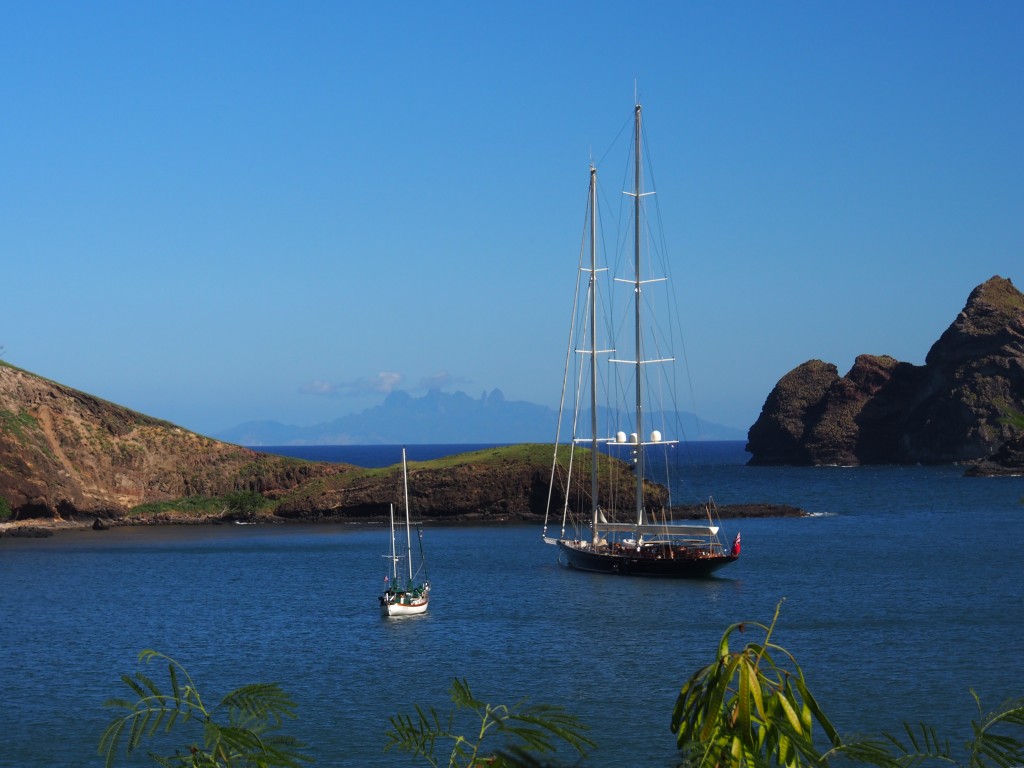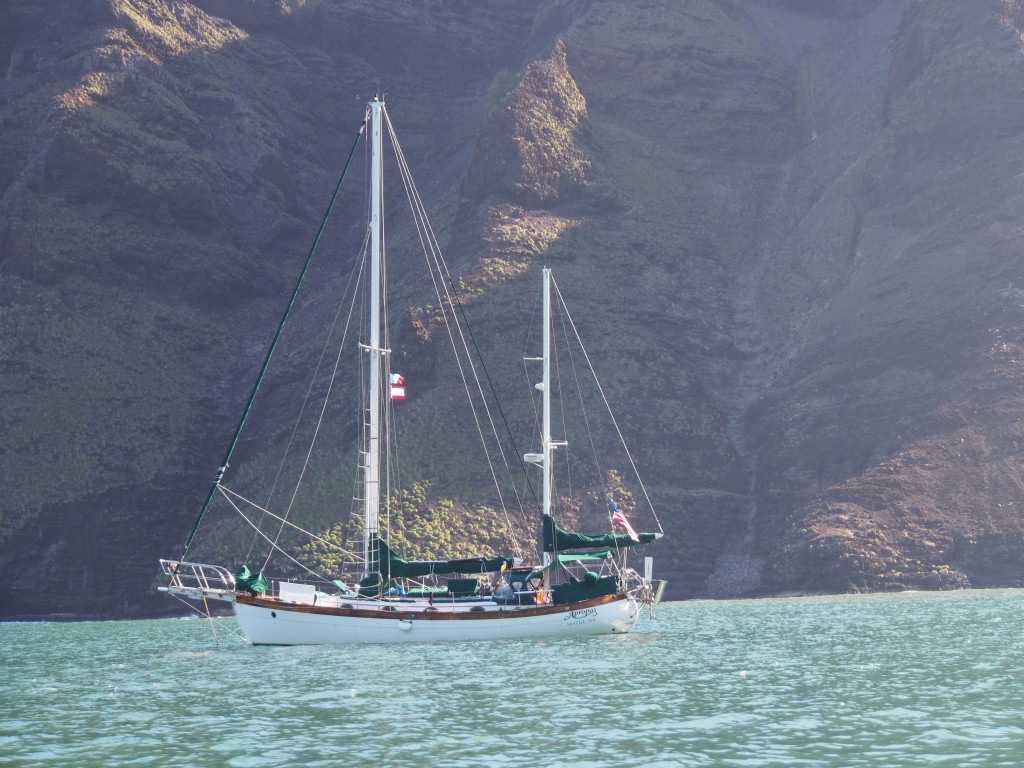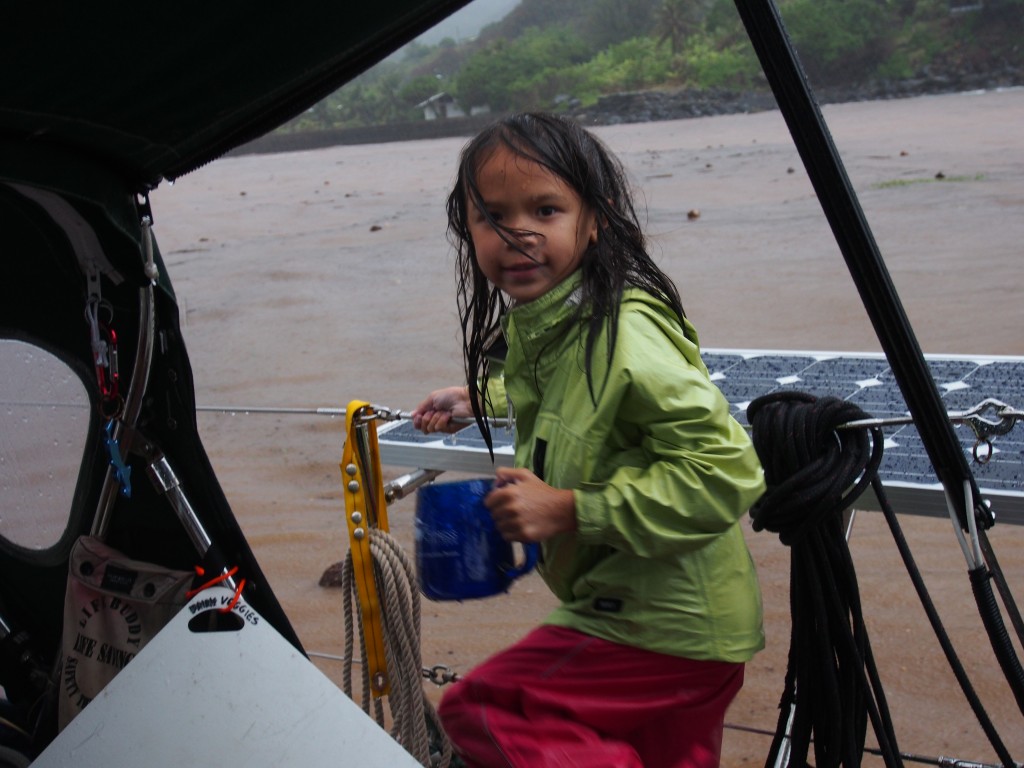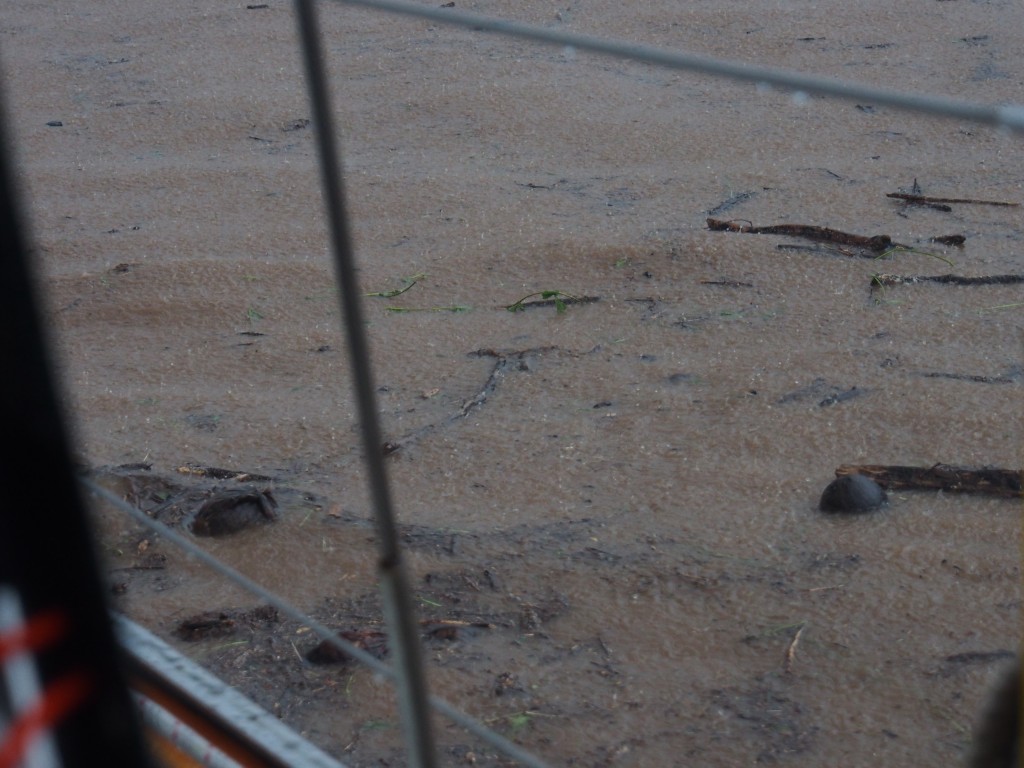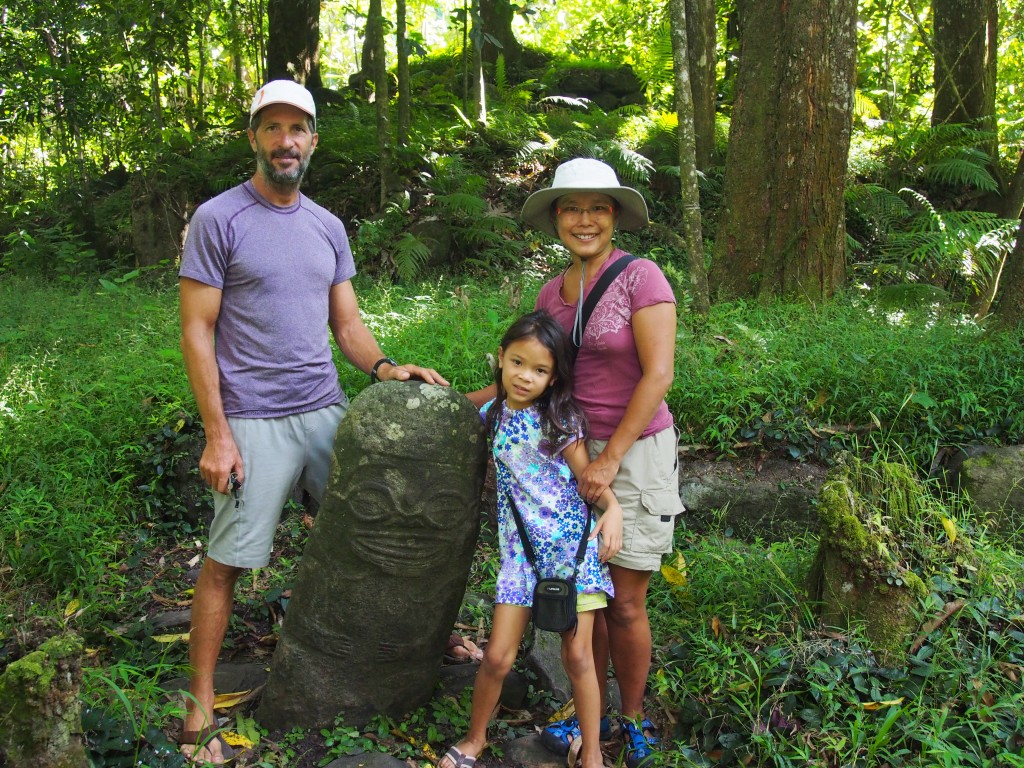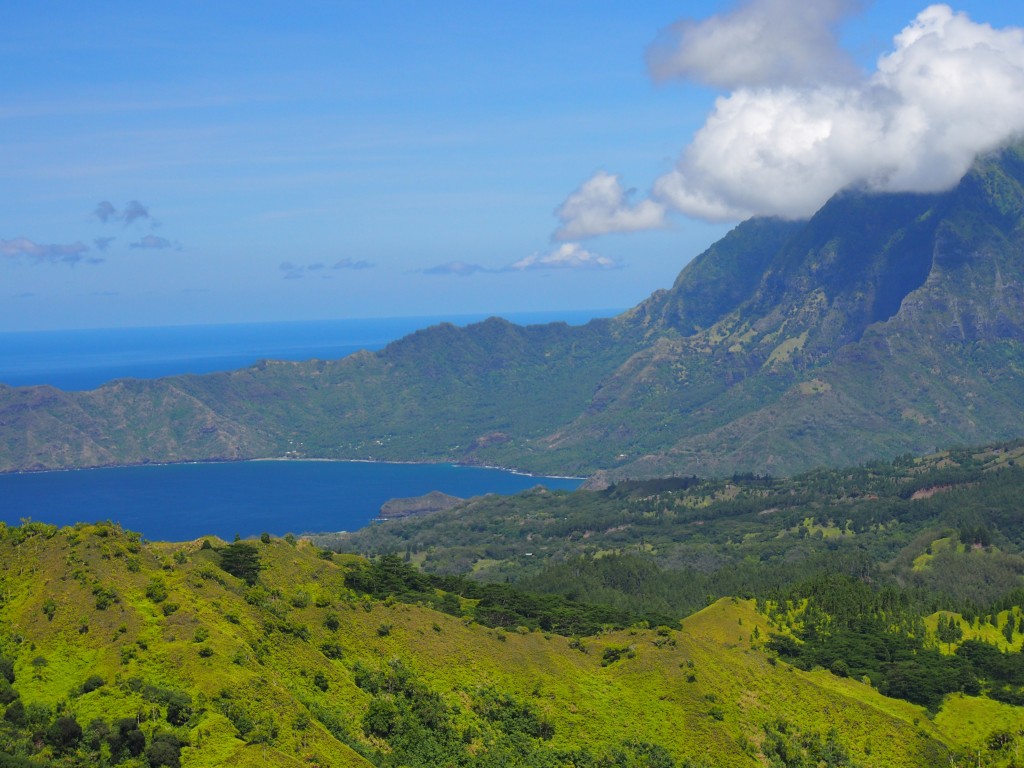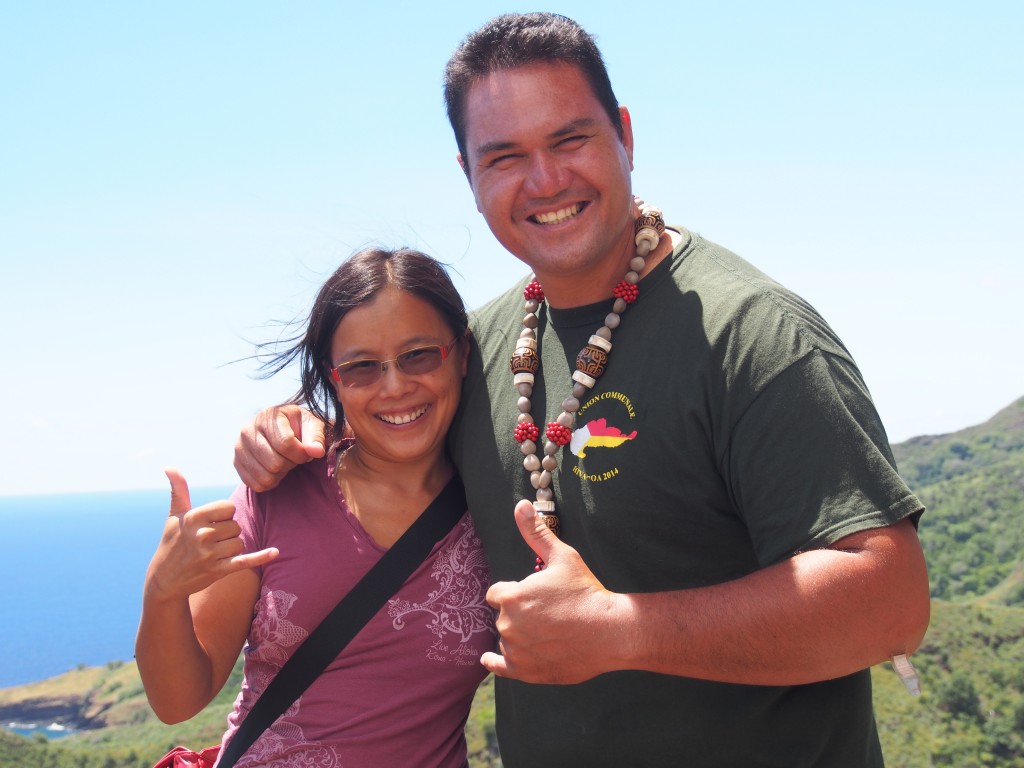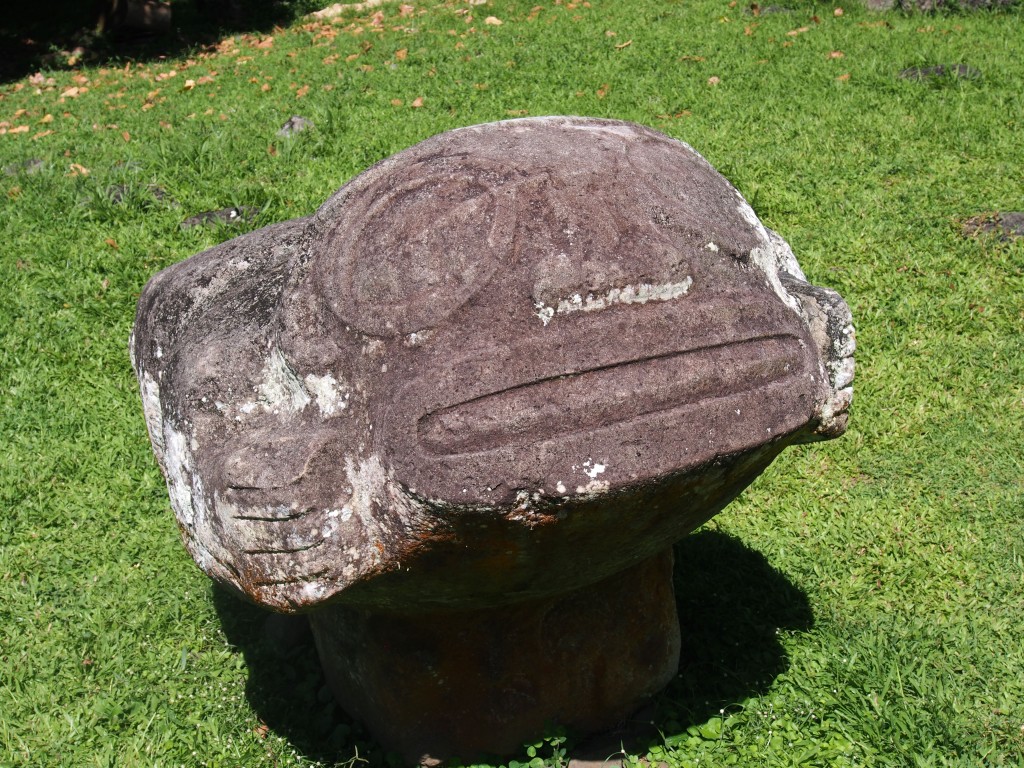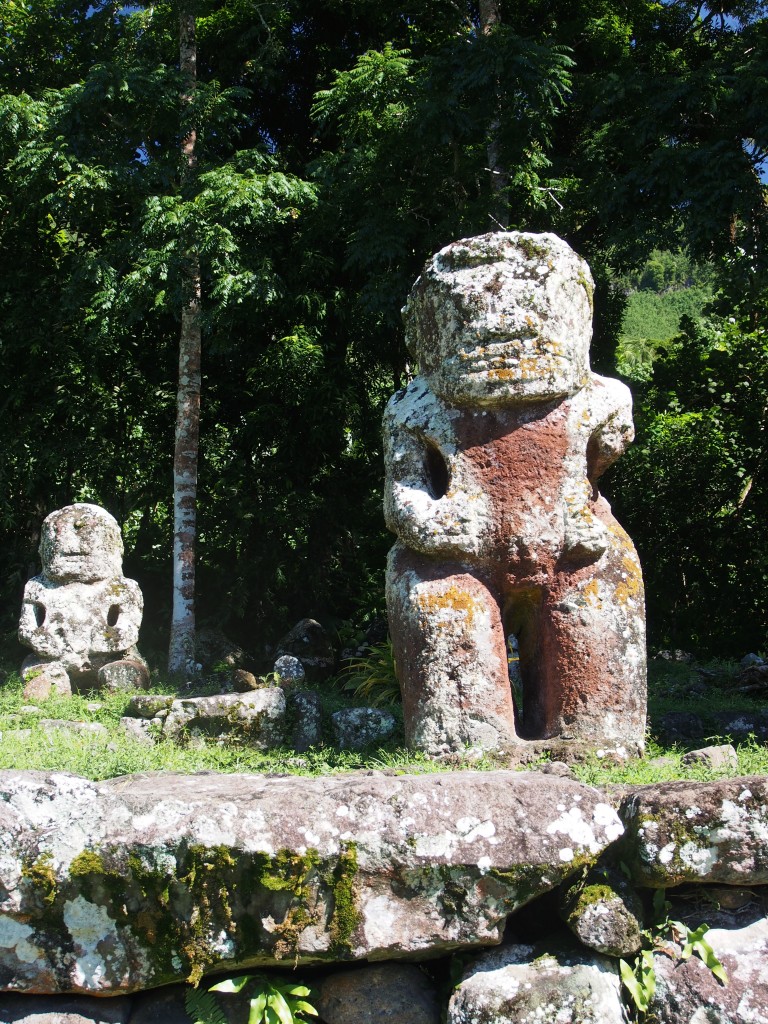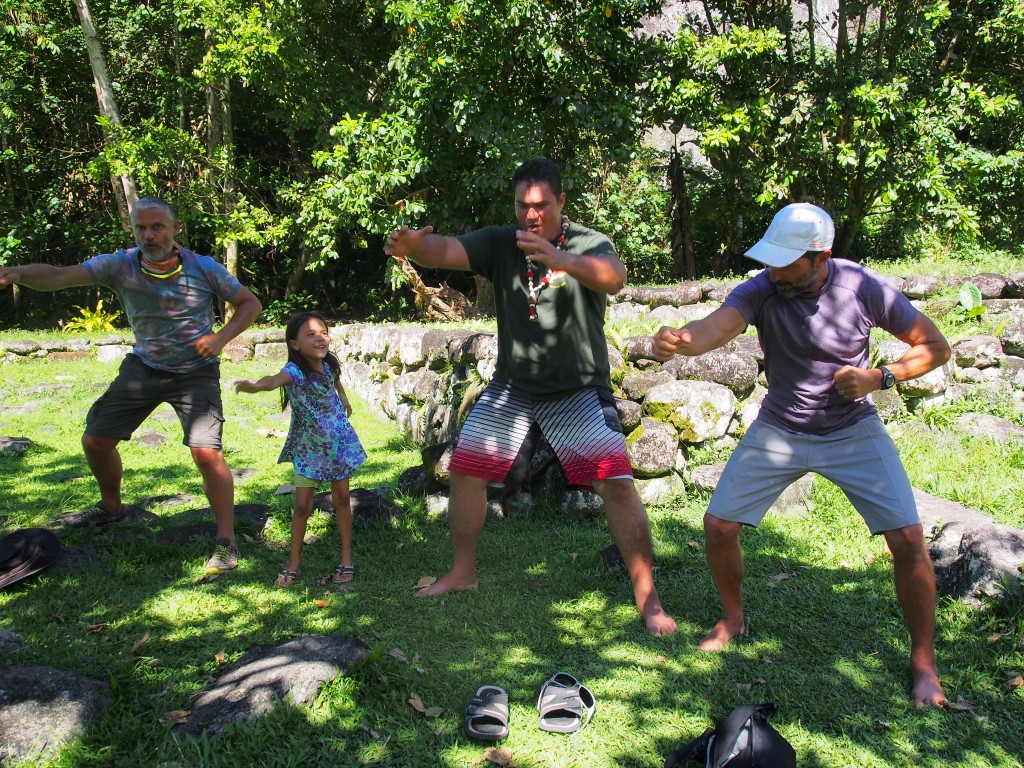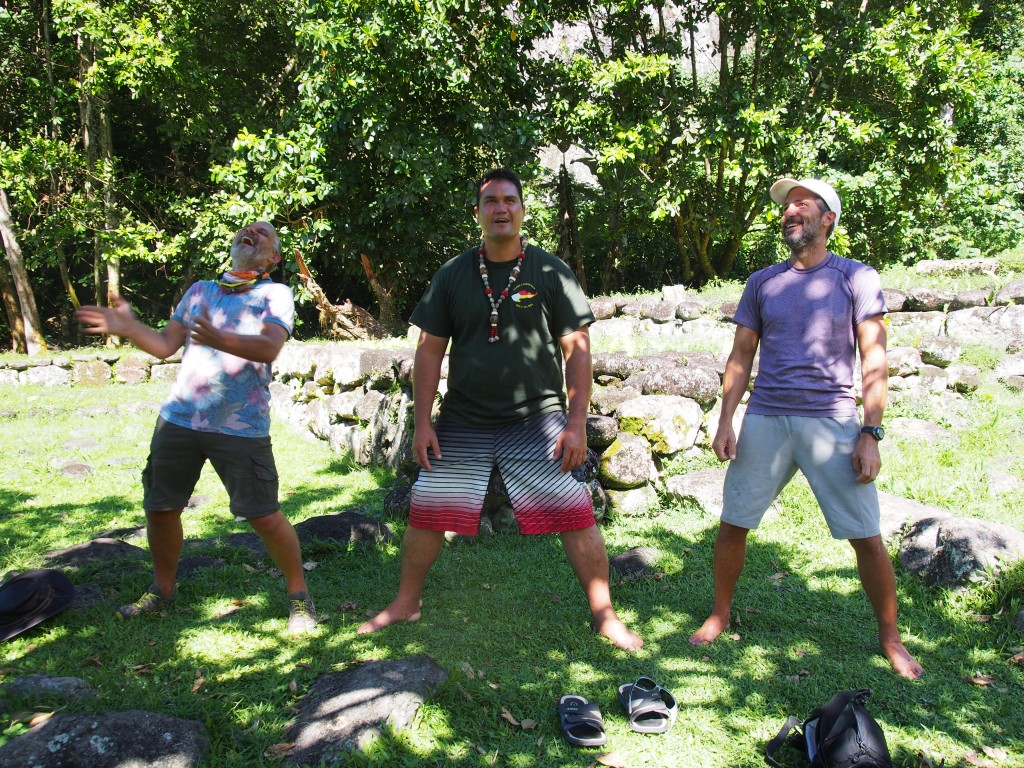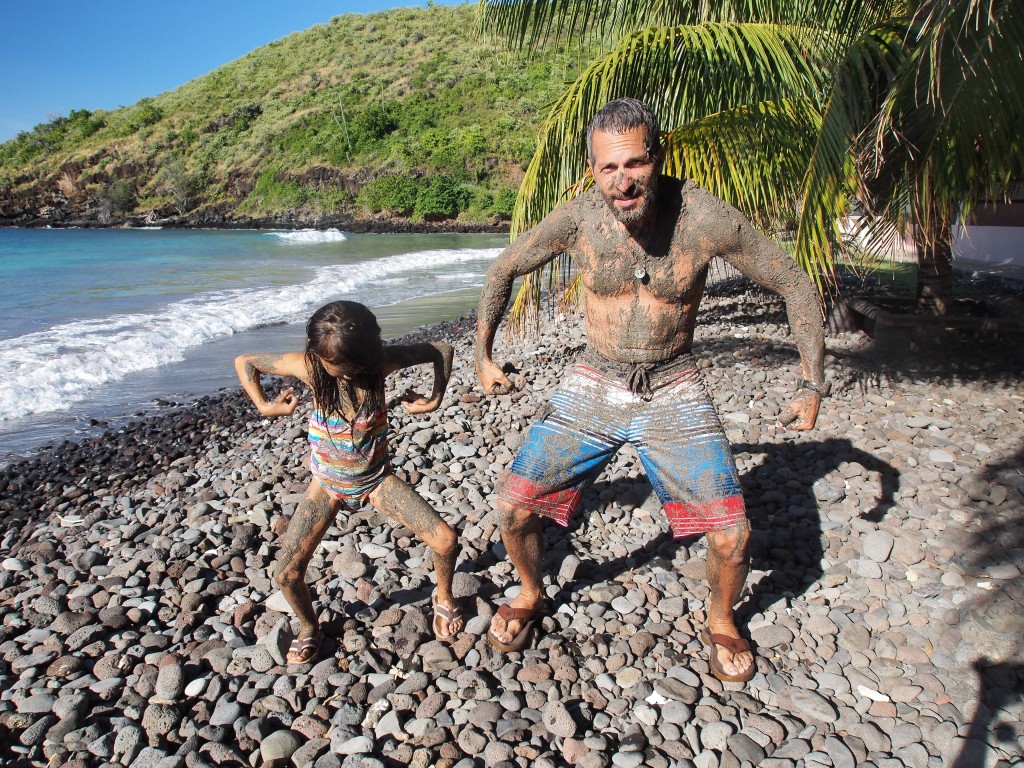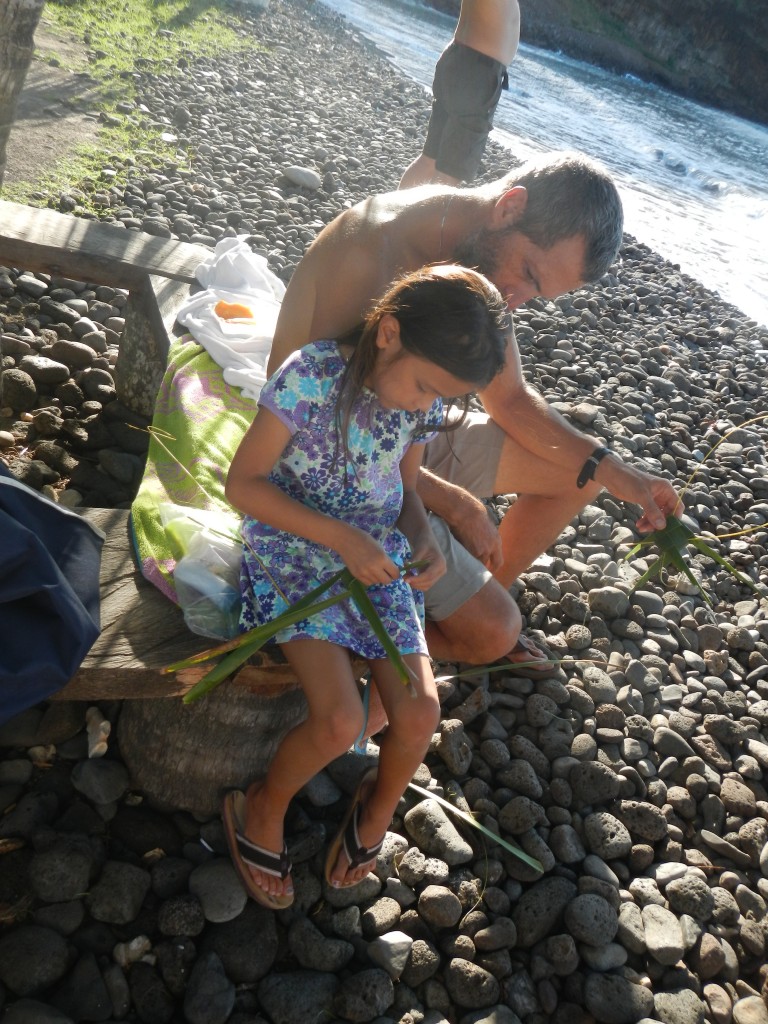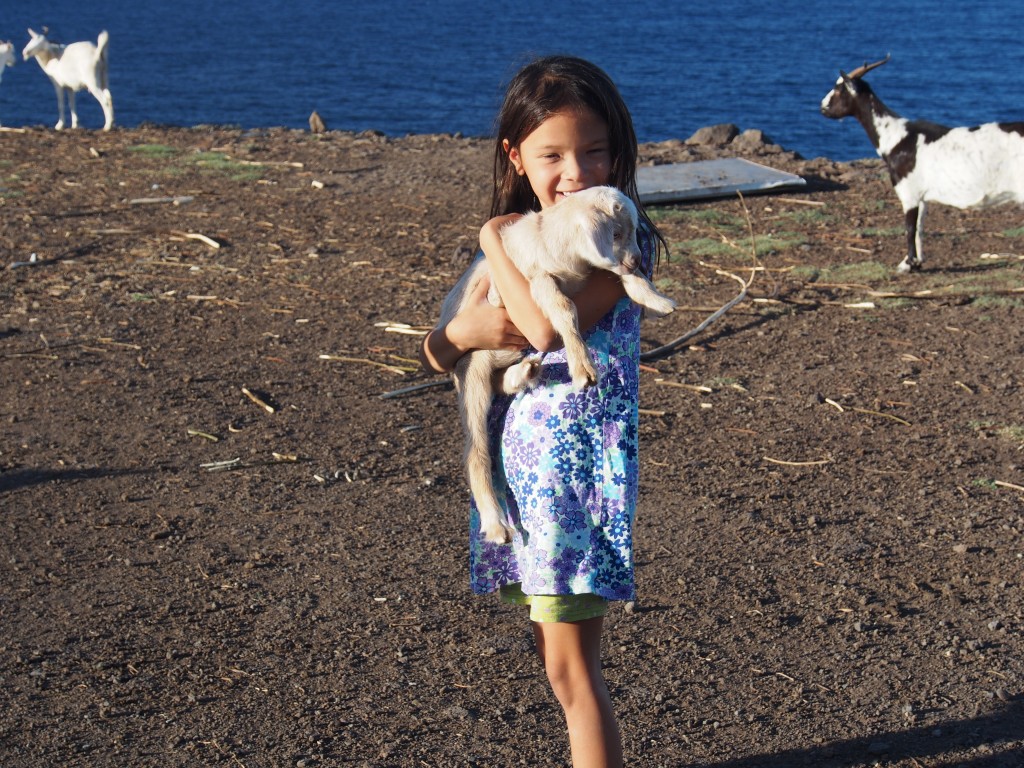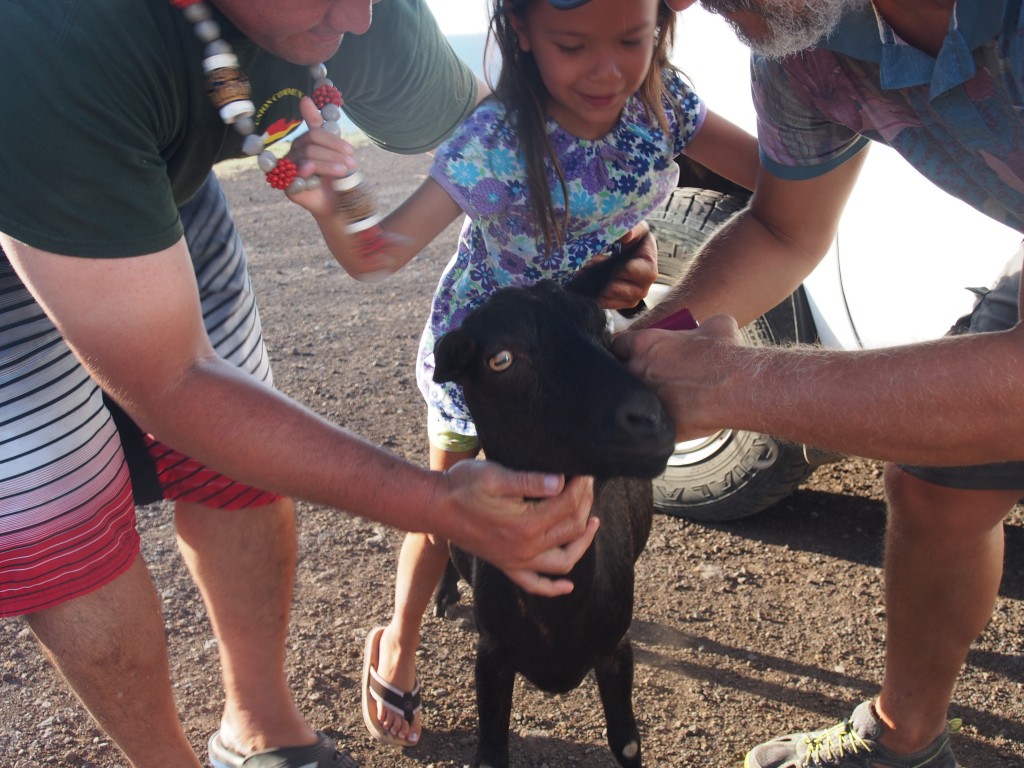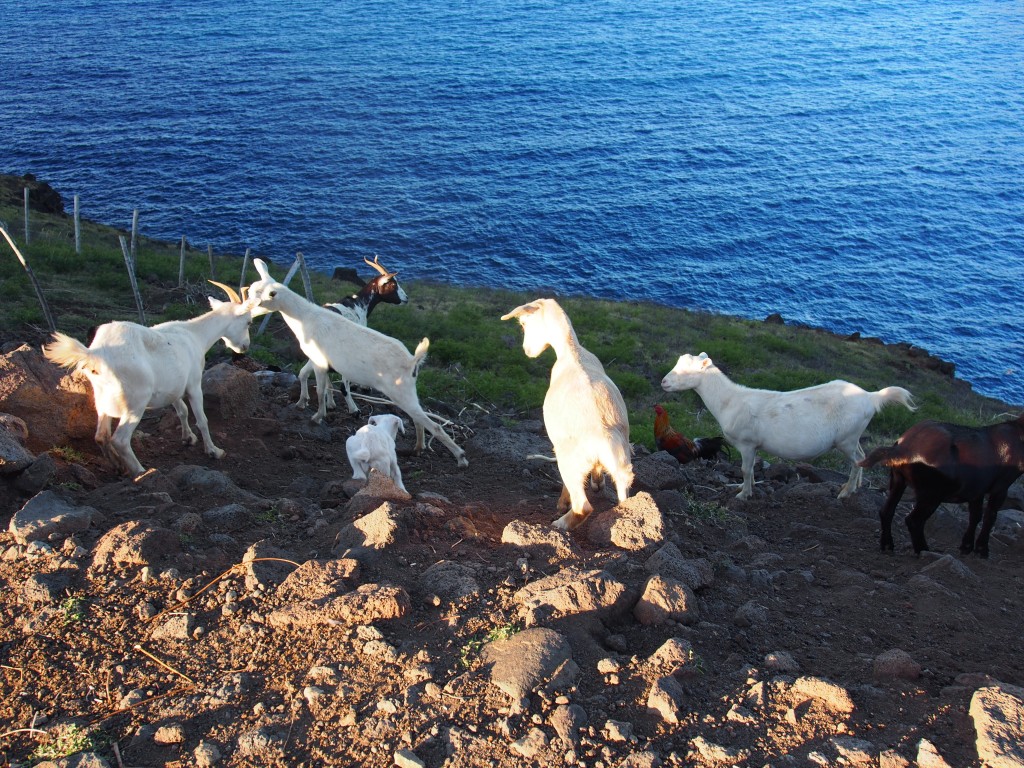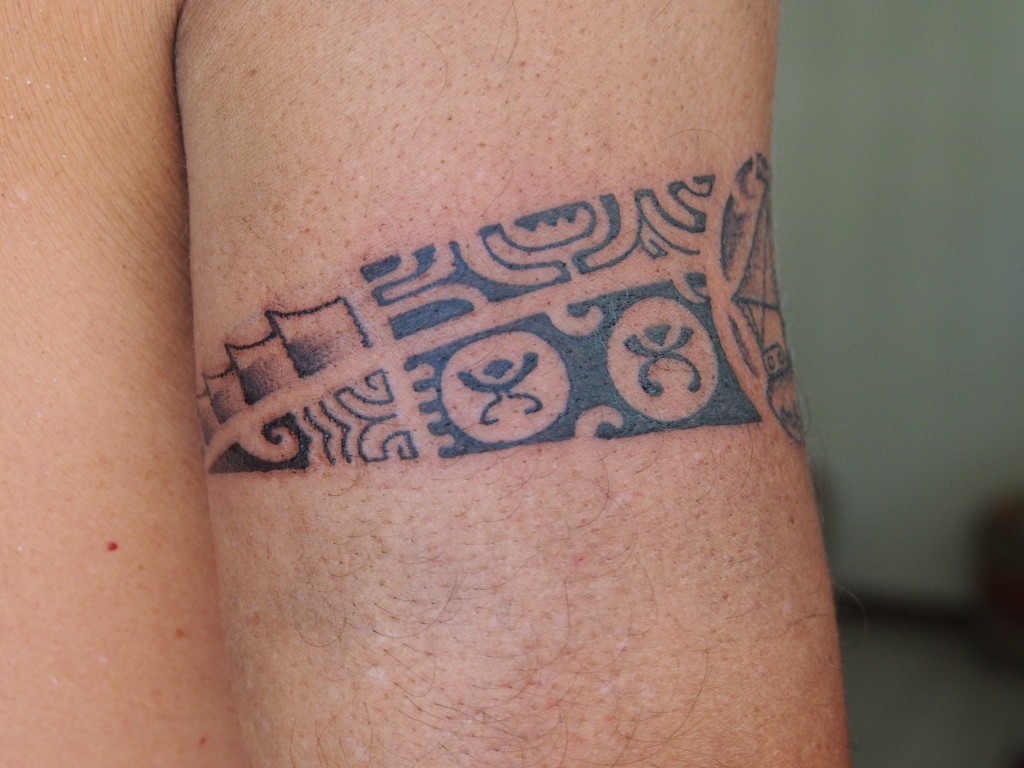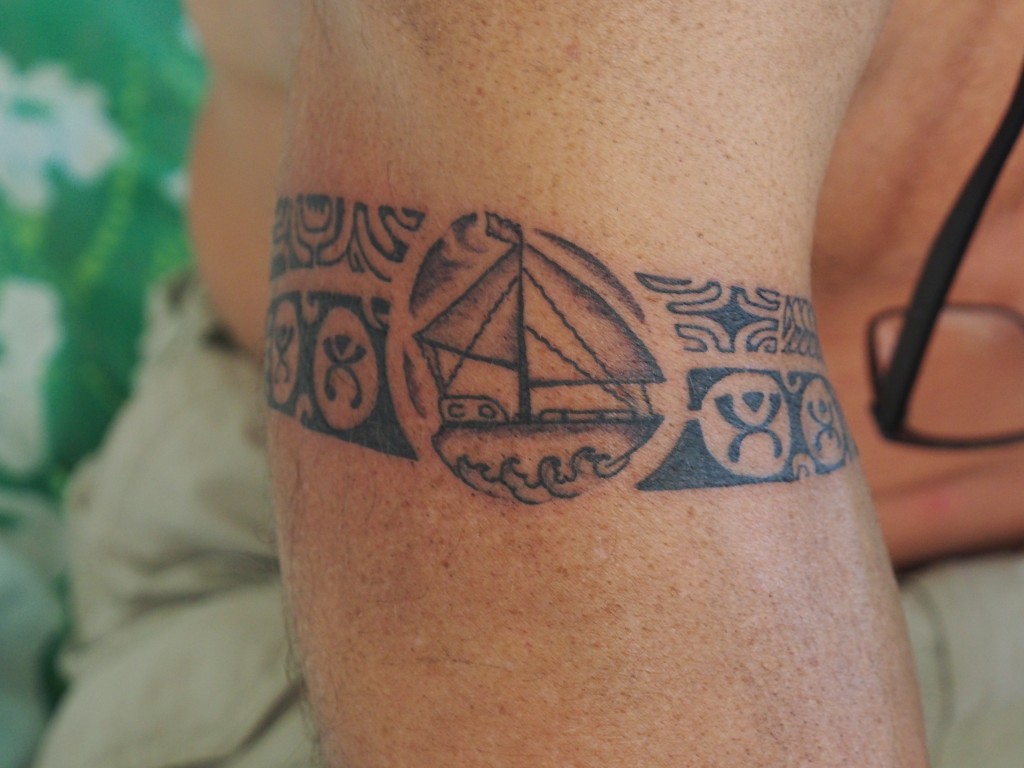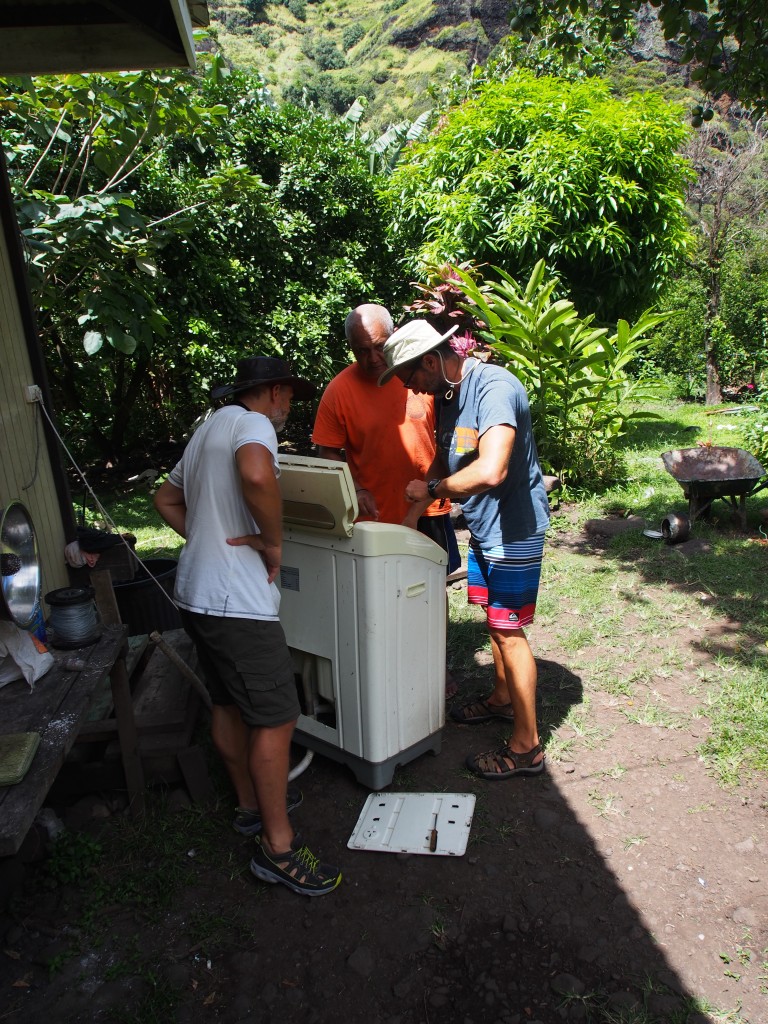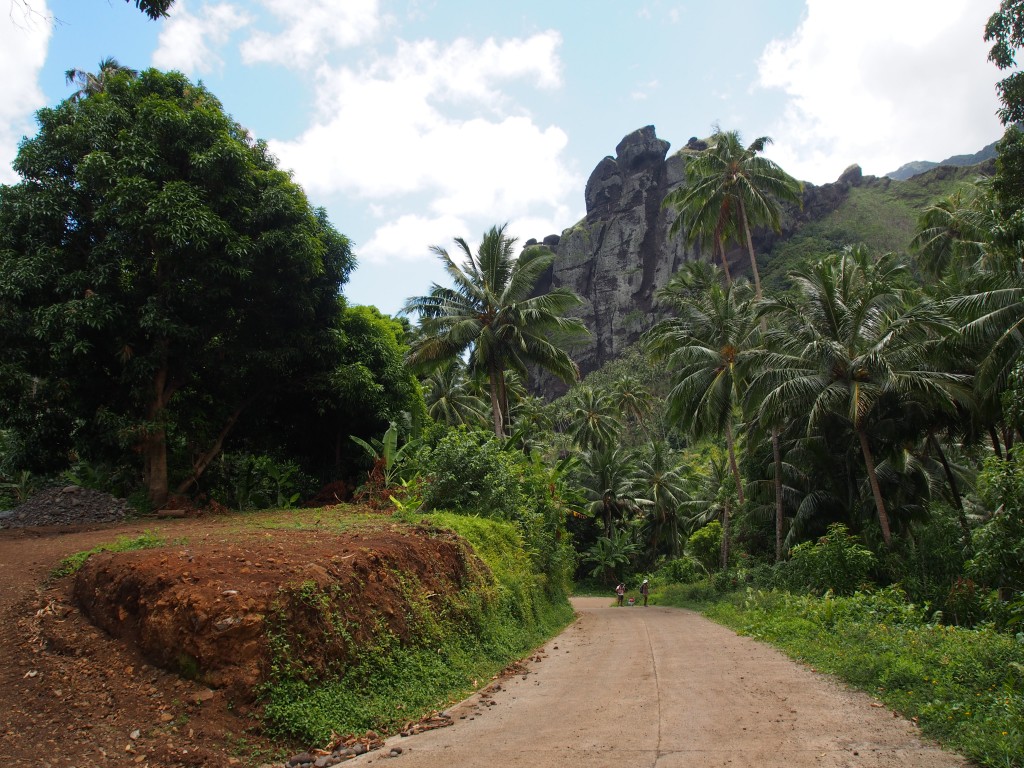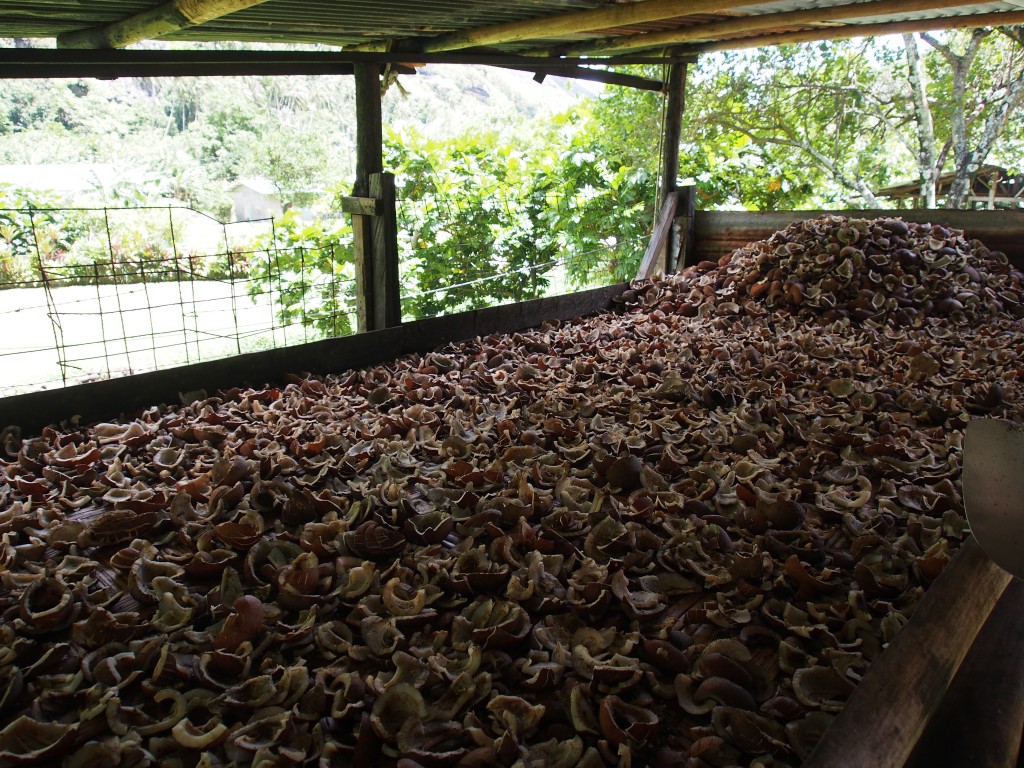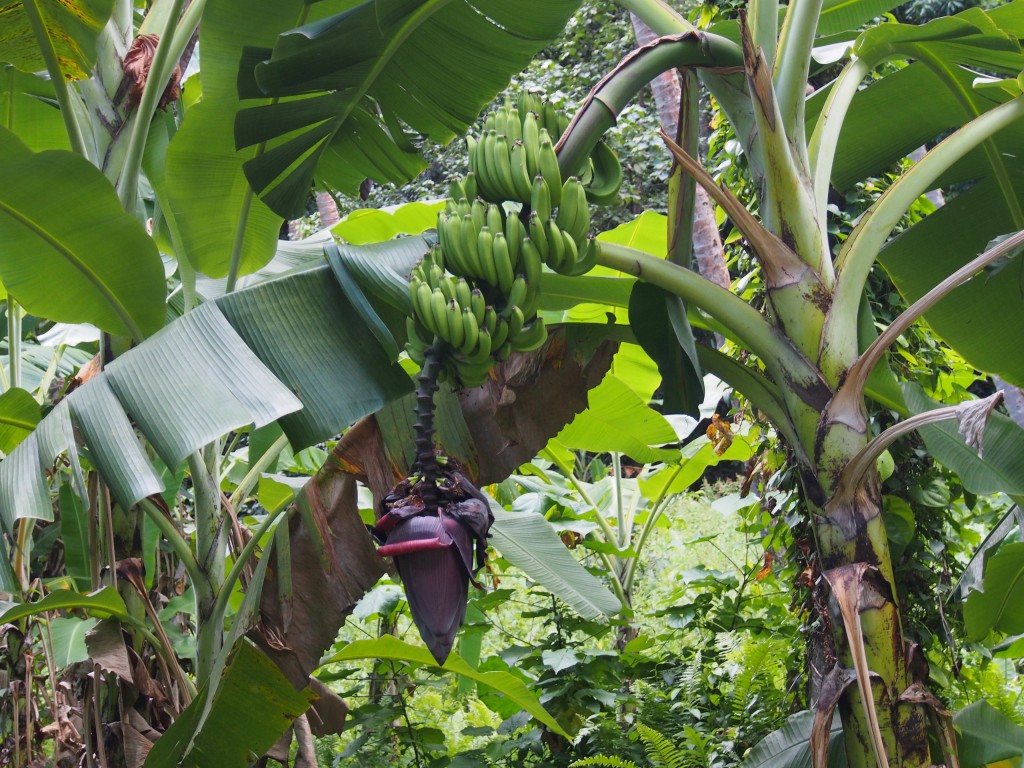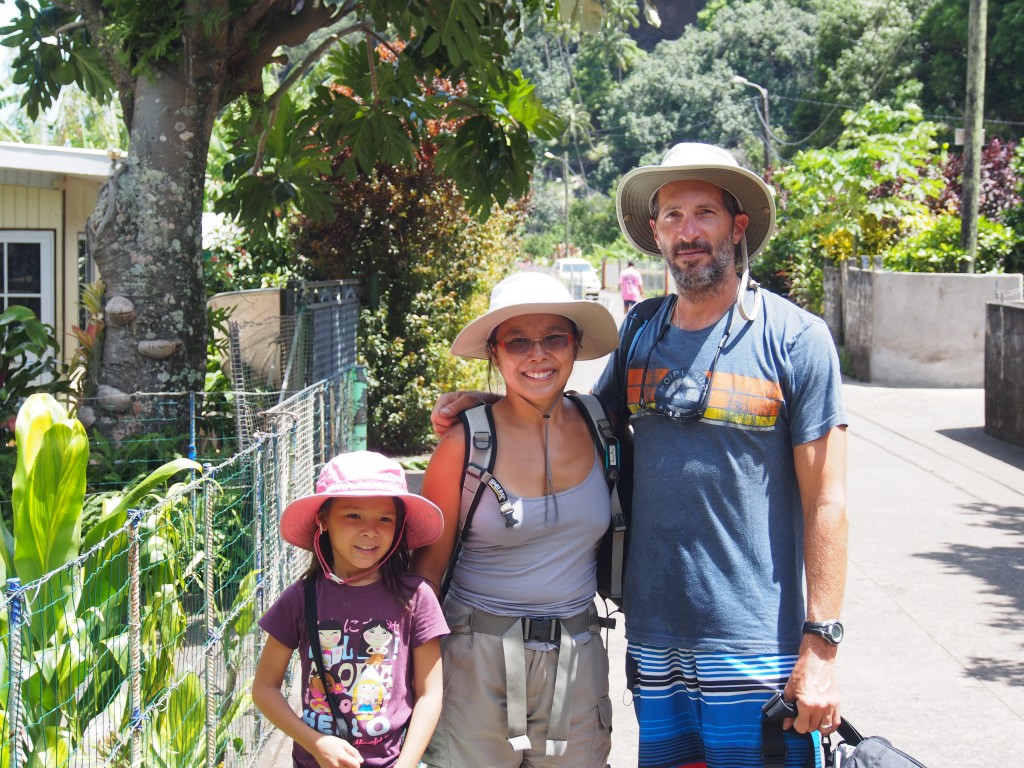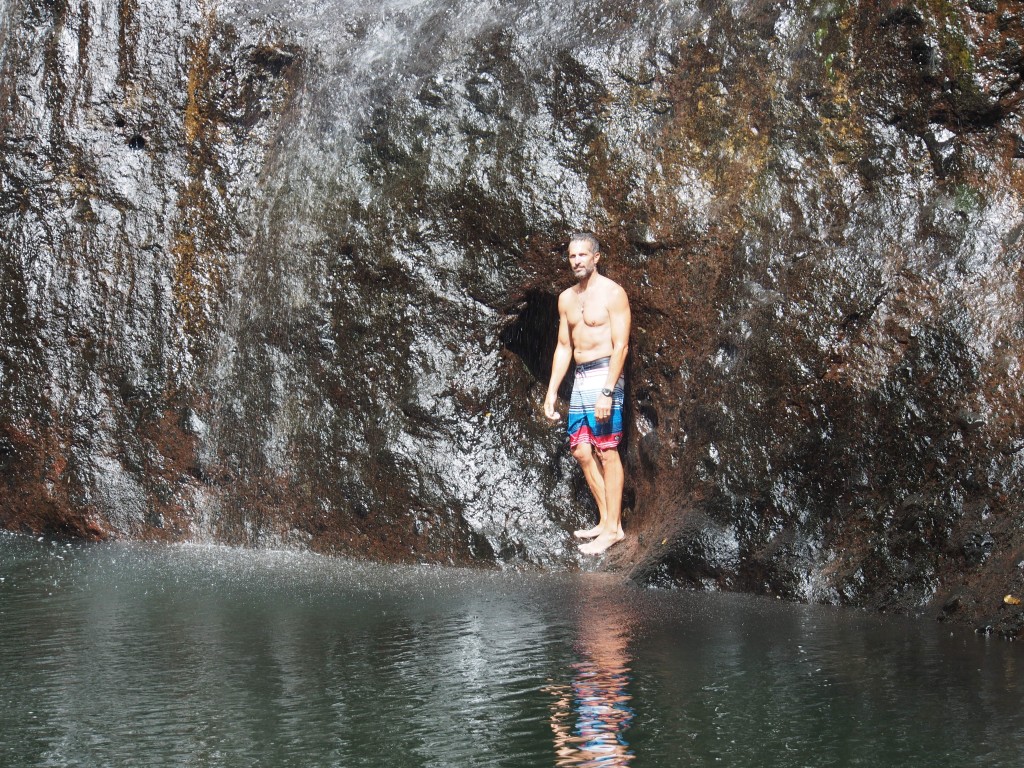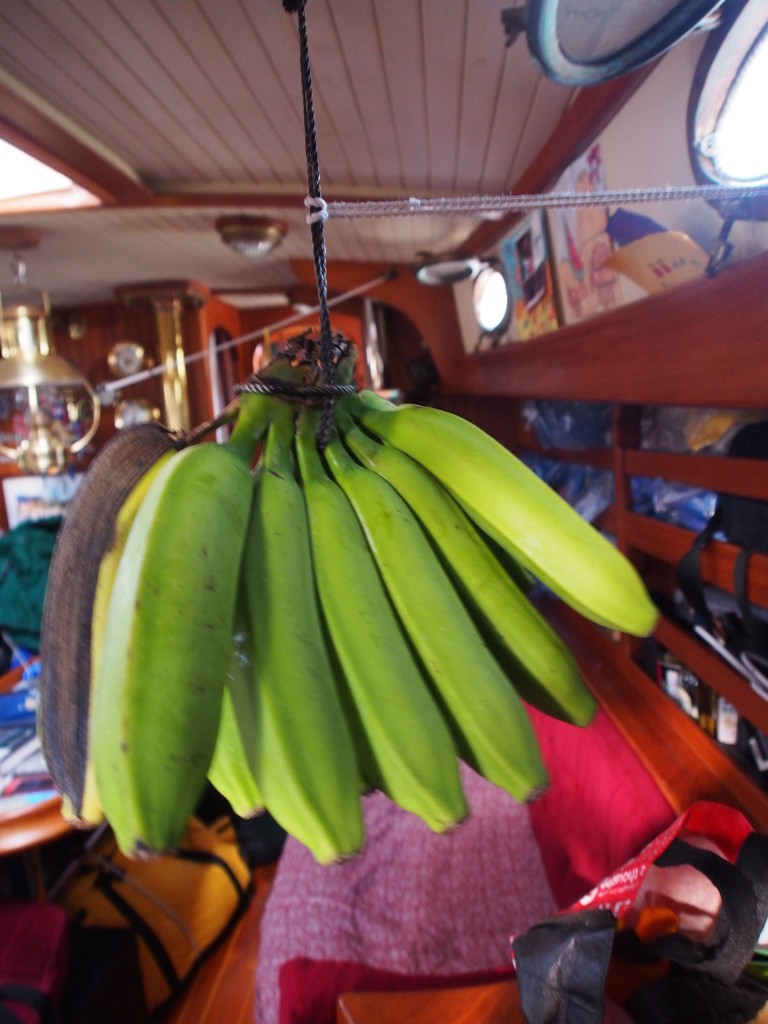The 2-day passage from Rangiroa to Tahiti was mostly motoring with maybe 6 hours of sailing. The seas were calm but we went through some squalls where the wind went from less than 10 knots to more than 20 knots in a matter of a few minutes. The last 25 miles we saw 12 knot winds directly on the bow so we tacked back and forth to reach the new downtown Papeete marina.
Marina Papeete is brand new and not officially open yet. The finger docks can hold 75 boats and replaced the old wharf where anchoring and backing up to a sea wall (Med-mooring) was required. The marina allowed a dozen boats from Jimmy Cornell’s Blue-Planet-Odyssey Rally (a 4-year round the world rally with awareness on global changes to the earth’s environment) to dock during their visit to Tahiti and also made an exception for us and a few others. Since the rally boats left, there are currently only 5 boats using the marina! After checking in, we had our first real indoor shower since Puerto Vallarta–2 months ago.
Papeete is the largest metro area in the South Pacific. After spending nearly 8 weeks offshore and in the Marquesan islands and Tuamotu atolls, it seams like a big city, and marina Papeete is located right downtown.
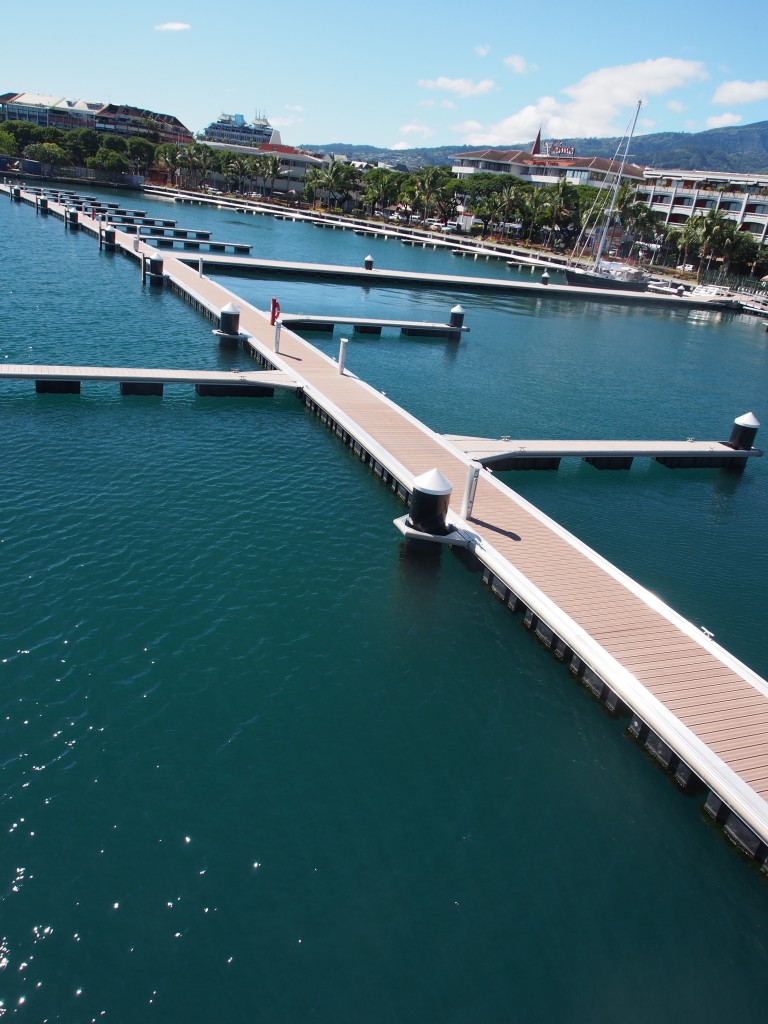
Central Market
A five minute walk from the marina, the indoor market has stalls for fish, fruit and vegetables, flowers, and handicrafts. They also have fresh bbq pork and chicken that’s sold by the kilo, french pastries, and beverages. We bought pamplemouse, mangos, cucumber, eggplant, rambutan, pastries, sugar cane juice, bananas, bbq pork, and a hula outfit for Jacintha.
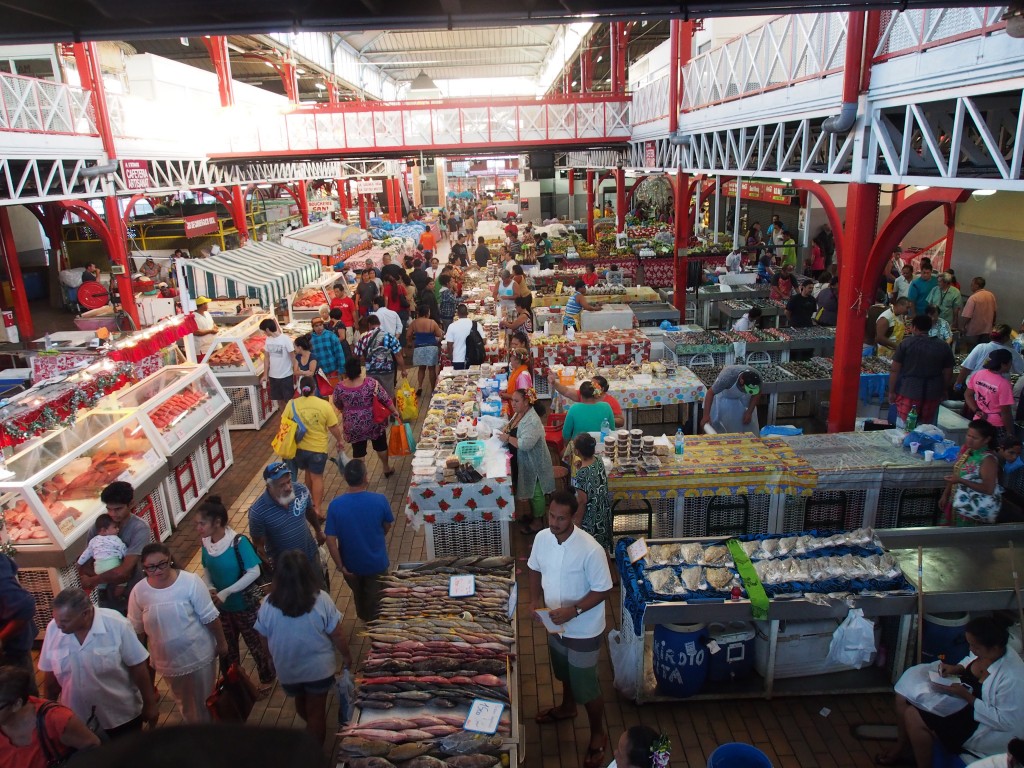
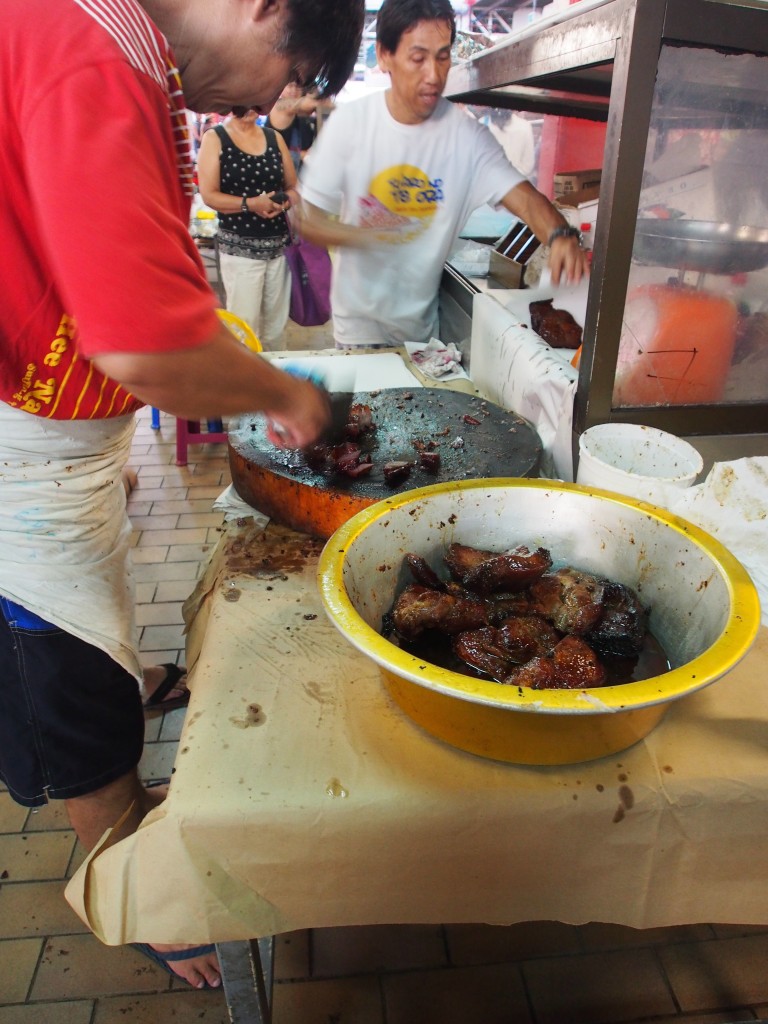
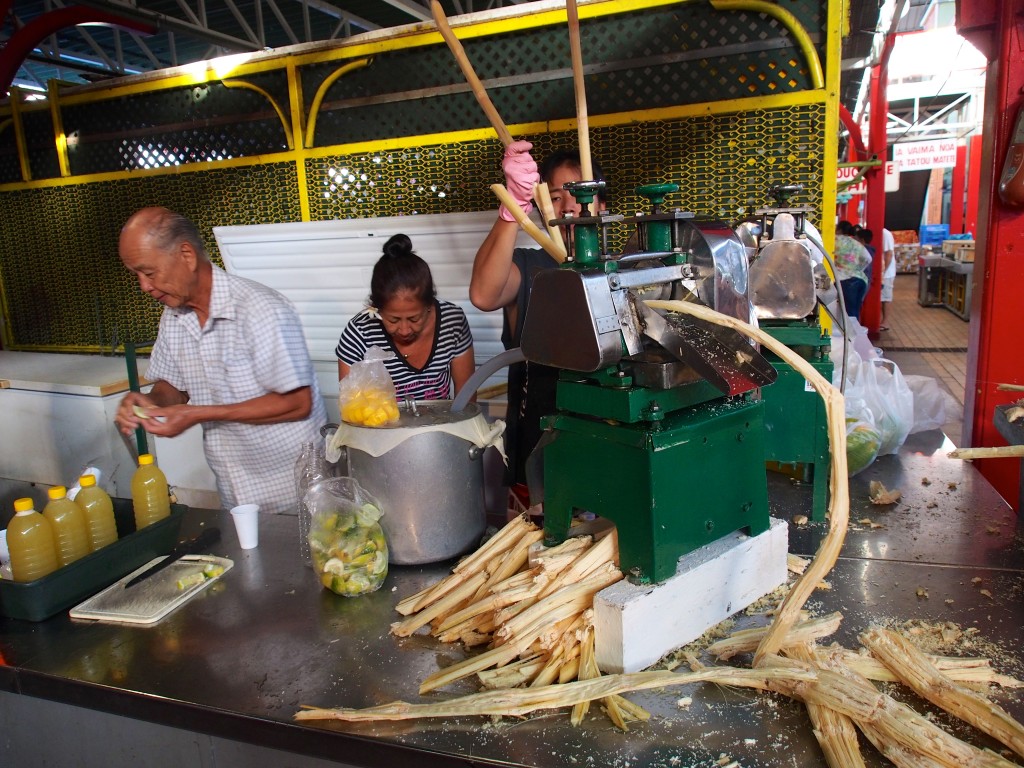
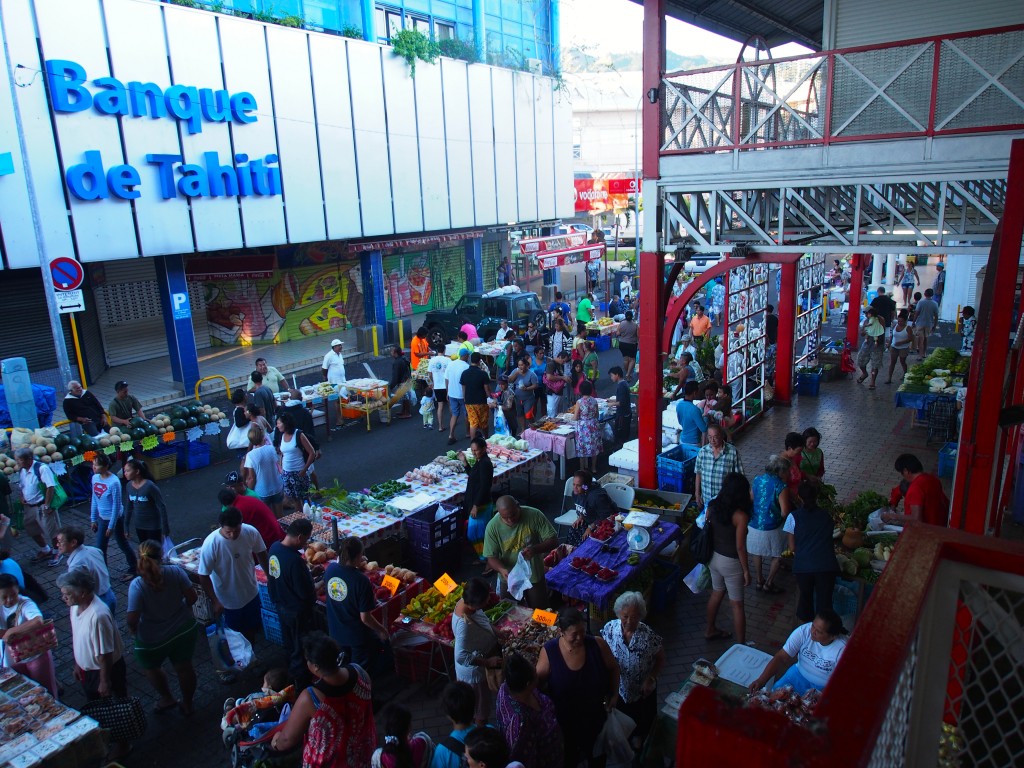
Notre-Dame Cathedral
We attended a church service at the cathedral, built in 1875 and restored in 2005. All the windows are stained-glass and inside is lots of incredible woodwork. The huge pipe organ and choir in the upper deck were amazing to listen to. The service was in French so we had no idea what it was about, but the experience was wonderful.
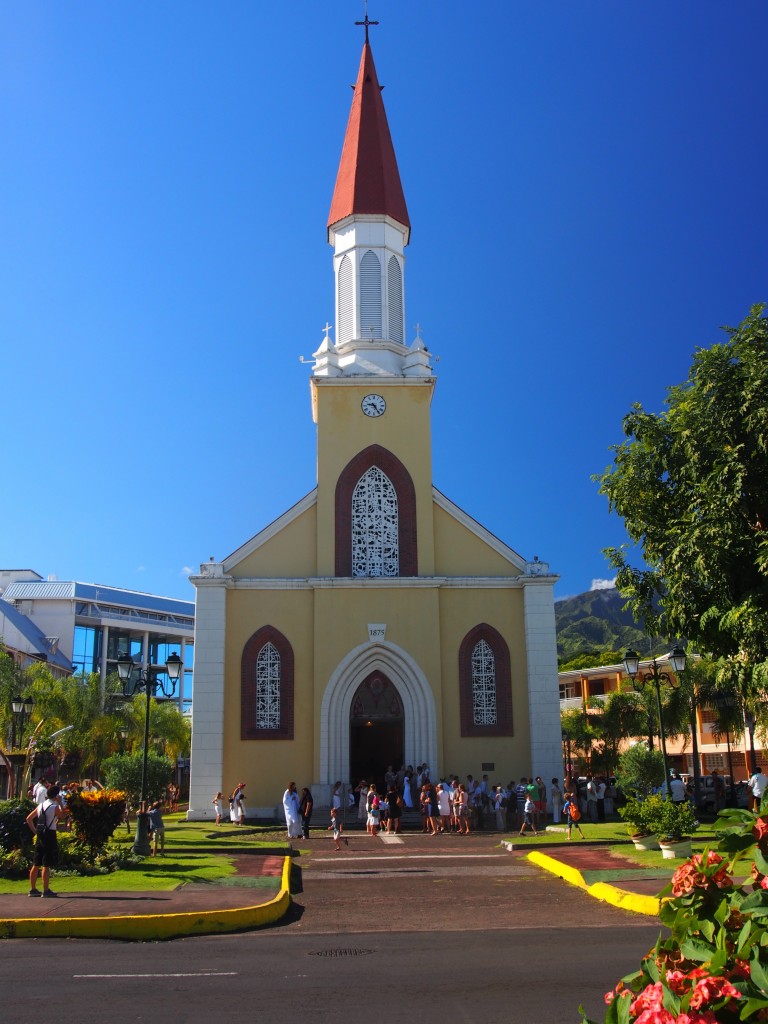
Medical Care Outside the US
During our first dive in Rangiroa, I scraped my ankle on some sharp coral and broke the skin. I didn’t think much of it at the time, but in the tropics, an open wound and being in the water a lot are a good combination for infections. Sure enough, a week later in Papeete the cut became infected and my ankle was painful and very swollen. We found a local medical clinic and after checking in at an outdoor window, I saw a physician after a 30 minute wait. At check-in, all they wanted was my name and where we were staying, no question about insurance or long forms to fill out. The doctor prescribed antibiotics after the nurse treated the cut, relieving some of the pressure by squeezing some fluid out. The charge was a mere $70 plus another $45 for the meds, ointment, and dressing.
Boat Repairs
Papeete is a good place to fix anything that needs it. There are 3 chandleries plus an Ace Hardware store, all within a half-mile of each other and about a mile from the marina. The chandleries are not anything like West Marine or Fisheries Supply, but the basic items can be found. I borrowed another curiser’s bike to make multiple trips, saving me lots of time. There’s also some labor services available for welding and diesel engine repair. Here’s some of the boat repairs and work we did during our stay in Papeete:
- Replaced the Genoa furling line that was chafed badly
- Changed the Racor filter
- Added cleats on the bowsprit for the whisker pole fore guy-lines
- Miscellaneous work on the wind vane
- Changed the engine fuel filter (fixed the low-RPM problem we were having)
- Did laundry (the manual way!)
- Re-filled propane tank
- Cleaned the dinghy
